CROSSBILL NATURE GUIDES










Crossbill Guides: Lanzarote and Fuerteventura, Spain
First print: 2014
Second, revised print: 2023
Initiative, text and research: Dirk Hilbers, Kees Woutersen, Constant Swinkels
Additional research, text and information: John Cantelo, Kim Lotterman, Albert Vliegenthart, Gino Smeulders
Editing: John Cantelo, Brian Clews, Jack Folkers, Cees Hilbers, Riet Hilbers, Kim Lotterman
Illustrations: Horst Wolter
Maps: Dirk Hilbers, Alex Tabak
Type and image setting: Oscar Lourens
Print: ORO grafic projectmanagement / PNB Letland
ISBN 978-94-91648-26-7
This book is made with FSC-certified paper. The printing process is CO2-neutral through carbon-offsetting. To compensate for the CO2-emissions of the printing processes, we’ve invested in the project ’Sustainable farming for the future’. For more information, see www.southpole.com under the listed project. You can find the certificate of the carbon-offset on our website under ‘downloads’ on the Rhodope Mountains Guidebook page.
© 2023 Crossbill Guides Foundation, Arnhem, The Netherlands
All rights reserved. No part of this book may be reproduced in any form by print, photocopy, microfilm or any other means without the written permission of the Crossbill Guides Foundation.
The Crossbill Guides Foundation and its authors have done their utmost to provide accurate and current information and describe only routes, trails and tracks that are safe to explore. However, things do change and readers are strongly urged to check locally for current conditions and for any changes in circumstances. Neither the Crossbill Guides Foundation nor its authors or publishers can accept responsibillity for any loss, injury or inconveniences sustained by readers as a result of the information provided in this guide.
Published by Crossbill Guides in association with KNNV Publishing.
www.crossbillguides.org
www.knnvpublishing.nl
www.saxifraga.nl

This guidebook is a product of the non-profit foundation Crossbill Guides. By publishing these books we want to introduce more people to the joys of Europe’s beautiful natural heritage and to increase the understanding of the ecological values that underlie conservation efforts. Most of this heritage is protected for ecological reasons and we want to provide insight into these reasons to the public at large. By doing so we hope that more people support the ideas behind nature conservation. For more information about us and our guides you can visit our website at:
WWW.CROSSBILLGUIDES.ORG

1 Witness the results of the gigantic forces that shape the Earth in Lanzarote’s spectacular craters, lava fields and massif cliff walls (route 2 and 5).
2
Rise at dawn and track down the desert birds, like Houbara Bustard, Cream-coloured Courser, and the endemic Canary Island Chat (route 3, 8 and 9).
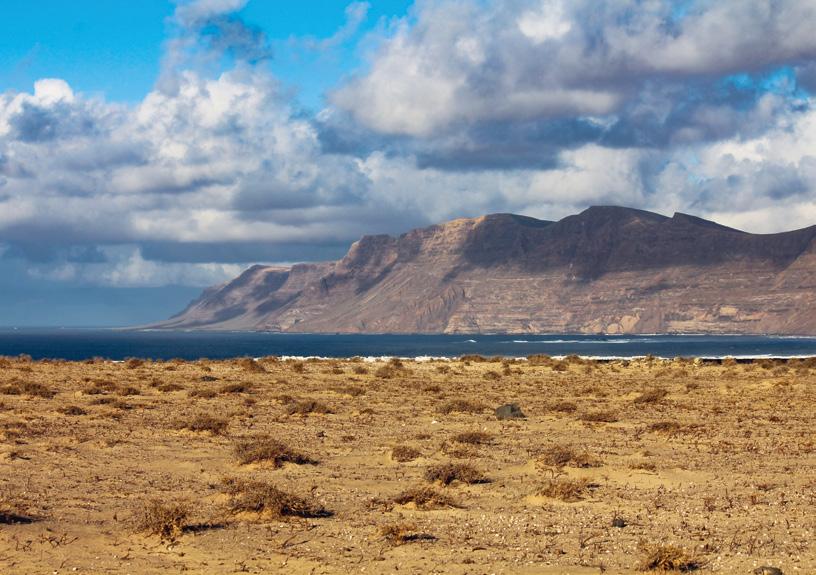

3 See the amazing, colourful, subtropical ocean life by snorkelling or from the comfort of a glass-bottom boat or submarine (page 161).
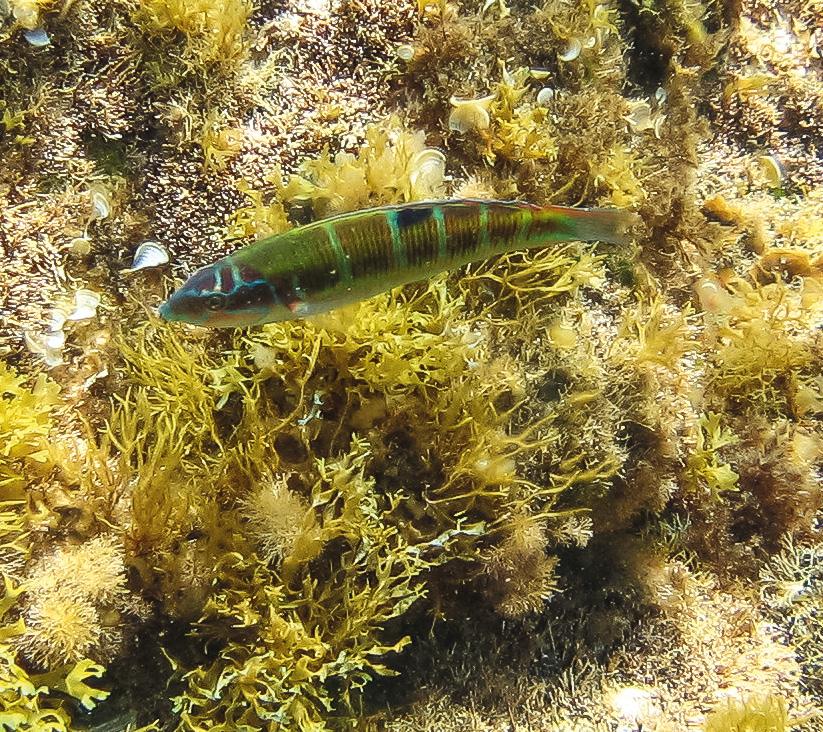
4
Trace the ecological processes of evolution and marvel at the endemic plants and animals on the islands (page 21).
6 Hike through the barrancos and along the cliffs and marvel at the rich and sometimes bizarrely shaped flora of these desert islands (route 4, 8, 9, 10 and 11).
5 Take a boat trip to enjoy the dolphins and the unique variety of seabirds around the Canary Islands (route 6, site L on page 122 and page 160).

8 Cycle round La Graciosa and imagine yourself in the landscape of the Canaries before the arrival of Man (route 6).
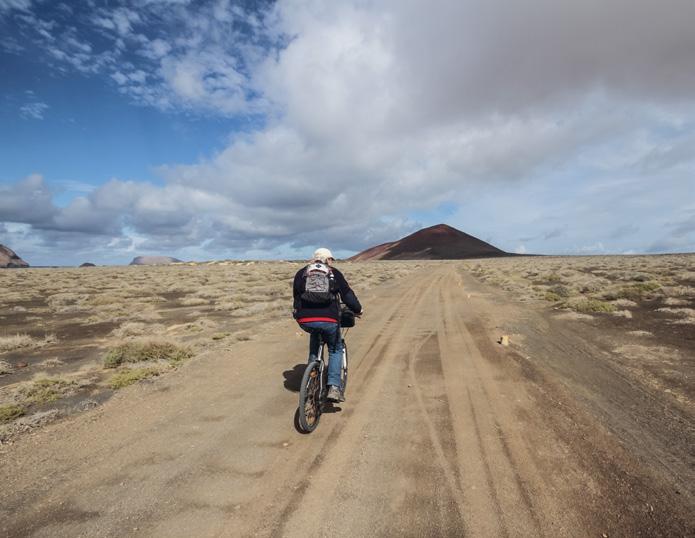

7 Island hop to appreciate the different landscapes, flora and fauna.



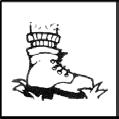


This guide is meant for all those who enjoy being in and learning about nature, whether you already know all about it or not. It is set up a little differently from most guides. We focus on explaining the natural and ecological features of an area rather than merely describing the site. We choose this approach because the nature of an area is more interesting, enjoyable and valuable when seen in the context of its complex relationships. The interplay of different species with each other and with their environment is astonishing. The clever tricks and gimmicks that are put to use to beat life’s challenges are as fascinating as they are countless.


Take our namesake the Crossbill: at first glance it is just a big finch with an awkward bill. But there is more to the Crossbill than meets the eye. This bill is beautifully adapted for life in coniferous forests. It is used like scissors to cut open pinecones and eat the seeds that are unobtainable for other birds. In the Scandinavian countries where Pine and Spruce take up the greater part of the forests, several Crossbill species have each managed to answer two of life’s most pressing questions: how to get food and avoid direct competition. By evolving crossed bills, each differing subtly, they have secured a monopoly of the seeds produced by cones of varying sizes. So complex is this relationship that scientists are still debating exactly how many different species of Crossbill actually exist. Now this should heighten the appreciation of what at first glance was merely a plumb red bird with a beak that doesn’t close properly. Once its interrelationships are seen, nature comes alive, wherever you are.
To some, impressed by the ‘virtual’ familiarity that television has granted to the wilderness of the Amazon, the vastness of the Serengeti or the sublimity of Yellowstone, European nature may seem a puny surrogate, good merely for the casual stroll. In short, the argument seems to be that if you haven’t seen a Jaguar, Lion or Grizzly Bear, then you haven’t seen the ‘real thing’. Nonsense, of course.
But where to go? And how? What is there to see? That is where this guide comes in. We describe the how, the why, the when, the where and the how come of Europe’s most beautiful areas. In clear and accessible language, we explain the nature of Lanzarote and Fuerteventura and refer extensively to routes where the area’s features can be observed best. We try to make Lanzarote and Fuerteventura come alive. We hope that we succeed.

This guidebook contains a descriptive and a practical section. The descriptive part comes first and gives you insight into the most striking and interesting natural features of the area. It provides an understanding of what you will see when you go out exploring. The descriptive part consists of a landscape section (marked with a red bar), describing the habitats, the history and the landscape in general, and of a flora and fauna section (marked with a green bar), which discusses the plants and animals that occur in the region.
The second part offers the practical information (marked with a purple bar). A series of routes (walks and car drives) are carefully selected to give you a good flavour of all the habitats, flora and fauna that Lanzarote and Fuerteventura have to offer. At the start of each route description, a number of icons give a quick overview of the characteristics of each route. These icons are explained in the margin of this page. The final part of the book (marked with blue squares) provides some basic tourist information and some tips on finding plants, birds and other animals. There is no need to read the book from cover to cover. Instead, each small chapter stands on its own and refers to the routes most suitable for viewing the particular features described in it. Conversely, descriptions of each route refer to the chapters that explain more in depth the most typical features that can be seen along the way.
In the back of the guide we have included a list of all the mentioned plant and animal species, with their scientific names and translations into German and Dutch. Some species names have an asterix (*) following them. This indicates that there is no official English name for this species and that we have taken the liberty of coining one. We realise this will meet with some reservations by those who are familiar with scientific names. For the sake of readability however, we have decided to translate the scientific name, or, when this made no sense, we gave a name that best describes the species’ appearance or distribution. Please note that we do not want to claim these as the official names. We merely want to make the text easier to follow for those not familiar with scientific names. An overview of the area described in this book is given on the map on page 13. For your convenience we have also turned the inner side of the back flap into a map of the area indicating all the described routes. Descriptions in the explanatory text refer to these routes.
interesting flora interesting invertebrate life interesting

reptile and amphibian life interesting mammals interesting birdlife
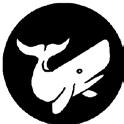

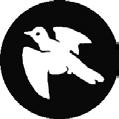
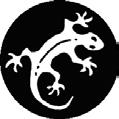

site for snorkelling

interesting for whales and dolphins
visualising the ecological contexts described in this guide
During strong easterlies, sand is blown over the islands and deposited on the plains. Corralejo Nature Park, Fuerteventura.

The Timanfaya lava fields on Lanzarote are part of the Timanfaya National Park which covers about a fourth of the island. The eruptions in the 18th century have given us some of the most important accounts of volcanism in modern times. It was a spectacular event that continued, with intervals, for more than five years. This was witnessed by a local priest who lived a few kilometres away, in the village of Yaiza. That he survived is a miracle, considering the fact that life on much of the island was extinguished. His written account states:
“The first day of September, 1730, between nine and ten at night, the earth suddenly opened near Timanfaya, two leagues of Yaiza. On the first night an enormous mountain rose up from the earth, and flames came out of the peak which kept burning for nineteen days”.
The land that was buried under the lava was some of the most fertile of the island, where grain and vegetables were cultivated. A total of 20 (!) villages were buried and 420 buildings were destroyed. All crops were lost, farm animals died, the wells vaporised and farmland was buried forever. Many people died, either directly or as a result of toxic fumes, and those who survived were left without property or the means for survival.
And today, all this is a National Park. Think about that fertile land when you visit this otherworldly, Mars-like landscape.
Because the eruptions were so relatively recent (the last one was in 1824), you can see some of the more spectacular features of volcanism. In one area that is often visited on guided excursions (part of route 2), the temperature just 10 metres below the surface is 600 ° C. Only 10 centimetres under the plastic soles of your neighbour’s flipflops (surely you thought of putting on proper footwear!), the temperature is as high as 160° C.
moist trade winds. Because the cliffs form the highest point on the island, rising straight out of the sea, they are basically the first thing the wind meets when it hits Lanzarote. The trade winds are especially frequent in summer, just when they are needed to cool down the atmosphere and are nearly constant in the month of July. Equally, the massive cliffs of La Jandía and the mountains of Betancuria on Fuerteventura purge a bit more water from the air.
Life on Lanzarote and Fuerteventura is easy. Tourists come to take some time off from the complexities of everyday life. In a way, nature has done the same. Lanzarote and Fuerteventura rose from the sea as a biologically blank sheet of paper without a living thing on it. Hence nature’s routines and ways had to be re-written. This is why islands like Fuerteventura and Lanzarote – in fact all Canary Islands – are such exciting places for biologists.
It is on isolated oceanic islands like these that that the processes of evolution and the formation of ecosystems are best witnessed. Their start can be traced back to just a few events of colonisation. These islands are giant outdoor laboratories of evolution, with the odd, endemic life forms being their products.
It is not at all difficult to plan your visit with the aim of understanding the evolution of life and the establishment of ecosystems. It’s certainly a lot cheaper and closer than joining most ‘evolution tourists’ on the Galapagos Islands! In fact, it gives you a fascinating, spectacular and beautiful insight into nature, but, as you’ll see further on, it also grants us a frightening window into a possible future. We have designed this chapter as an armchair excursion through some of the places on Lanzarote and Fuerteventura that form the narrative of the process of evolution.
Truly clean slates in evolutionary terms are rare in the world, but in Timanfaya National Park on Lazarote, you have an example (route 2). Large parts consist of lava spat out less than 300 years ago. This is the hottest and most recent volcanic ground on Lanzarote and is pretty much devoid of life. Only one group of organisms has already been able to colonise this barren ground: lichens.
At its most basic form, life needs two elements: building blocks for a body (water, carbon, nitrogen and several other elements) and energy to make and maintain such a body. On Timanfaya, these requirements are hard to come by. Lichens are super organisms – an alliance between algae and fungi. These two very different life forms are so tightly woven together that we can actually talk of lichen species. The algal component of the lichen is, like most plants, able to use the sun’s energy to take up carbon, while the fungal part is able to absorb minerals from rock. Hence lichens can survive almost anywhere on earth, even here on the ‘Fire Mountain’.
Driving through Timanfaya, you’ll eventually come to a place where the monotony of the lichen-clad lavas is interrupted by a vegetated spot. The Spanish call it an islote, an islet of old lava that wasn’t covered by the 18th century eruptions.

Here odd-looking, thick-stemmed bushes cover the slopes – bushes of a kind you won’t find outside the Canary Islands. Most common are Balsam Spurge and King Juba’s Spurge, members of a family with a worldwide distribution, but these particular (sub)species occur only on the Canaries. The seeds of these plants are far too heavy for the wind to carry them, and the occurrence of such species on volcanic islands is one of these key pieces in the evolutionary puzzle. The seeds of such plants are likely to have travelled as cargo in the bellies of birds, such as pigeons, that strayed too far from the coast and found the inhospitable bare islands as their only place to land. A lucky poop on a bit of soil (thanks to the lichen cover there is now some soil and not just bare rock) and the colonisation of the island is thus underway.
There are other ways of reaching an oceanic island. The most obvious is active flight as exemplified by birds, bats and some insects. Wingless animals sometimes travel
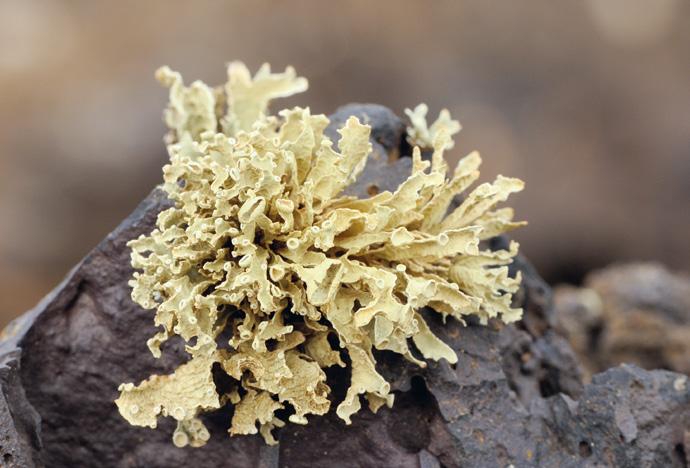
on ‘rafts’ of floating plant material. Probably this is how some beetles and other insects arrived along with small lizards and mammals. This is difficult for larger animals hence, on Lanzarote and Fuerteventura we find only one native lizard, skink, gecko and land mammal (a small shrew). This is a considerably less diverse range than seen in non-flying smaller animals like insects. Perversely, many wingless animals currently found on the islands (the beetles are a good example), only lost their capacity for flight once they colonised the islands. Finally, some animals and plants have exploited mankind’s capacity of crossing the oceans. They hitched across on a boat.
Now let’s travel to the southern tip of Fuerteventura, to the peninsula of La Jandía, where you’ll find more plants than just the Balsam Spurge. Alongside it grows the conspicuous, cactus-like Canary Spurge, and the even more prickly Jandía Spurge* (Euphorbia handiensis). The latter is, as the name implies, restricted to the very slope on which you stand. It is an endemic, occurring nowhere else in the world. The odd thing about the flora of La Jandía (and much of the Canaries) is the presence of many endemic species, which mostly belong to just a few plant families. On the Canaries, the spurges (Euphorbia), buglosses (Echium), houseleeks (Aeonium, Aichryson) and the daisy family (Asteraceae) are well represented. One very special daisy, the Winter’s Marguerite* (Argyranthemum winteri ), is also found exclusively on these slopes.
This odd botanical composition (very few families with many endemic species) is typical of volcanic islands and is due to two different processes each enhancing the other. First, colonisations are few. The land birds that stray this far out from land tend to be migrants so are unlikely to stay to breed whilst rafts of plants that accidentally wash up these shores are still fewer. Consequently, those lucky plants that did manage to establish themselves, had the whole islands pretty much for themselves. They could quickly spread, making it more difficult for new arrivals to find their own niche. This explains why there are very few species groups. Secondly, each new arrival on an island brings with it a very small range of genes, just those of the few specimens that managed to establish themselves. Rarely are these a good representation of the vast gene pool of the mainland population. The majority of the unusual and some of the characteristic genetic traits will be lacking, whereas others that were rare in the original population will be over-represented. These rare
Succulent scrub consisting of King Juba’s Spurge, Balsam Spurge and Verode. The spurge family shows an exceptional diversity of species on the Canary Islands, begging the evolutionary question: why so many species, belonging to so few families?

traits will suddenly become common in the new population, and within a few generations, the genetic make-up of the island population will be very different from that of the mainland – a process called genetic drift. Reproduction in isolation with an odd subset of genes is the fastest way for a new species to evolve.
On Lanzarote there are steep slopes too. The Famara cliffs (route 4) are not unlike those of La Jandía: spectacular, north-facing cliffs at the edge of the ocean. Here you find another marguerite – a pretty yellow one this time, called Madeira’s Marguerite (Argyranthemum maderense), which is, confusingly, an endemic wildflower of Lanzarote. If you were to visit Gran Canaria, Tenerife, or the other islands, you could add many more marguerites to the list.
On our previous stop at La Jandía it became clear why only few species groups are on the islands and why they are represented by endemic species, but how is it possible that there are so many different endemic species within that same group? Why four instead of a single spurge? Three instead of one houseleek?
The Canary Marguerites are well studied and are like the botanical version of Darwin’s Finches. There are 24 species in total, of which 20 are endemic to the Canary Islands with the others found only on the other Macaronesian islands. They are a textbook example of how speciation on islands takes place. The first ‘proto-Marguerite’ seed germinated on
Fuerteventura, arriving from Africa via a passing bird. As it flourished, the species’ genetic make-up quickly changed from the ancestral species through genetic drift. Later, due to another chance event, a little seed from the Fuerteventuran population arrived on Lanzarote. Yet another period of genetic drift split the Lanzarote Marguerite from the Fuerteventura one. And then a seed arrived on Gran Canaria etc. To each island its own Marguerite.
Meanwhile there is also a process of adaptation taking place. The new environmental conditions favour a genetic makeup that provides the best adaptations to novel conditions. Here the plant’s genetic imprint will soon ‘drift’ towards the characteristics needed to survive in these different conditions – that is, if these genes are present in the original population, or if mutations allowed these traits to develop. This is the process Darwin described as being key to evolution: natural selection. It explains why succulence has become such a dominant trait of Canary Island plants: it is the perfect adaptation to survive here. It is also why Tenerife, which has a much more varied set of ecosystems, is home to nine species of Marguerite, each adapted to its own habitat. Fuerteventura, ecologically a much less diverse island, has only one. So isolated islands with a variety of habitats and limited genetic input are true biodiversity generators. It is here that the motors of evolution go full throttle, creating many different species from a narrow genetic base coming from only a few families of plants.
Enough about plants. What about birds? Very early in the morning, the central desert plains of Lanzarote (route 3) give you a good opportunity to get to grips with the birds of the island. With good light and decent optics, it isn’t hard to notice that most bird species are a little different from their mainland relatives. The Buzzard is slightly lighter in colour and more streaked below. The Kestrel is darker and males have a darker grey head. Indeed, for resident island birds distinct subspecies are almost the norm. There are island races of Egyptian Vulture, Houbara Bustard, Trumpeter Finch, Raven and Great Grey Shrike (see also box on page 78). Clearly, it is
Shrubby Marguarite, the most common and widespread of the 24 species of Marguarites on the Canary islands. All except 4 are endemic to the archipelago.

The Canarian Ravens are not (yet) considered separate species, but merely as a subspecies. However, it is clearly different from its European relative, being much smaller and having a brown neck and a different call.

La Graciosa – once home to the endemic Black Oystercatcher and the Chinijo Stonechat. Both are now extinct (see page 86-87).
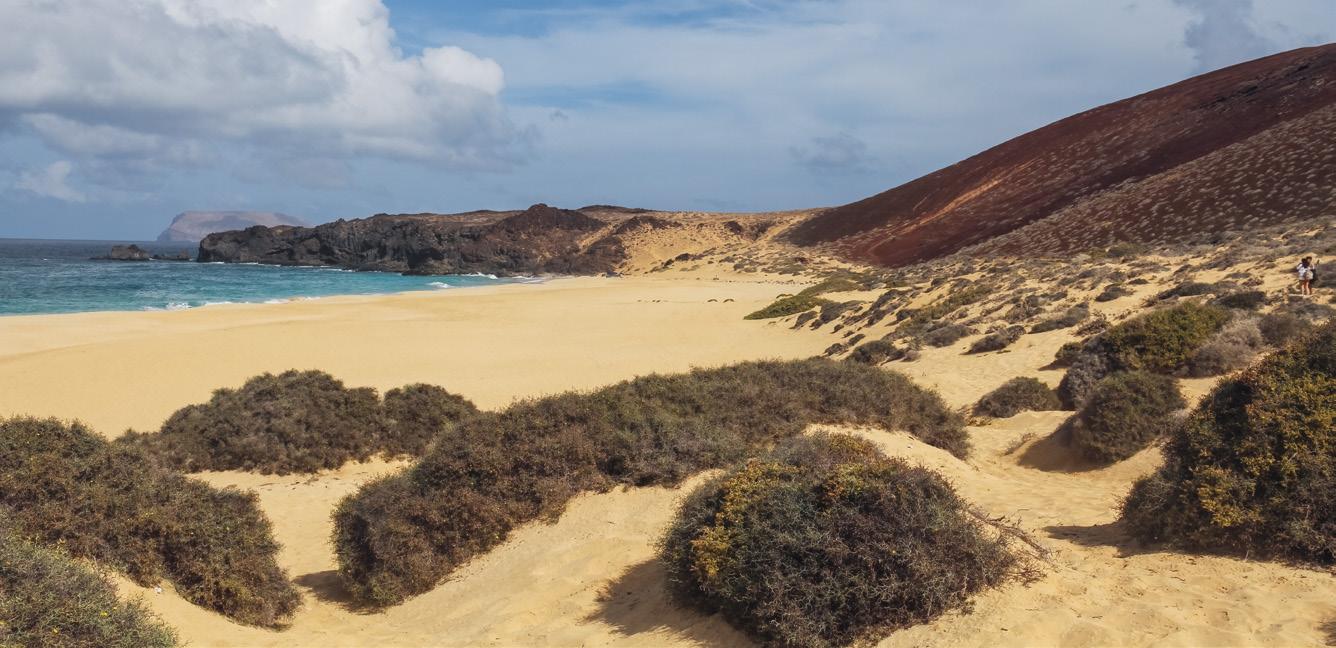
not only the plants with so many endemics on the Canaries. Bird populations are also changing and evolving in new forms. But there is a big difference between birds and plants. A viable bird population needs much more space.
The small islet of La Graciosa is clearly visible from the miradores on the Famara cliffs (route 4). The ferry crosses the small strait between Lanzarote and La Graciosa in less than half an hour (route 6). Walking along the wave beaten coastal rocks of this small island, you may enjoy a small flight of Turnstones, and perhaps Whimbrel. Nevertheless, it is oddly silent, because there is one vital element missing: the Canary Islands or Black Oystercatcher (see page 86-87). This bird sadly became extinct sometime in the 20th century. Why is uncertain, but there are plenty of theories! A little further inland, there is a similar emptiness as the local subspecies of the Fuerteventura Stonechat is no more. Reason unknown.
Here, we come to the question of extinction. Why do some species disappear while others flourish? Small islands can only support small populations. Since natural populations always fluctuate, it takes only a little to bring a population to the brink of extinction. Add a disaster, such as the Timanfaya eruption, and the extinction often follows.
Populations on small islands are also vulnerable, because many species evolved under conditions where there were only a limited number of threats. Developing in isolation, without even small terrestrial animals, island ecosystems are vulnerable to alien intruders. Sources of food, be they animal or vegetable, have not developed protective defences. Any introduction, intended or accidental, can then be a true ‘game changer’, wiping out existing species in mere generations. Such introductions are human induced. We brought large herbivores (goats) to the islands, which roam freely and favour the slightly greener locations, such as the Betancuria mountains. And we brought cats and rats. And these changed the appearance of the Canaries forever. On a global scale, islands suffer the biggest loss of species. The list of Canary Island extinctions, human induced or otherwise, is long and contains the likes of the Giant Rat, the Lava Mouse, the Giant Lizard and two shearwaters endemic to Lanzarote and Fuerteventura, to name but a few.
History teaches us that the arrival of people on an oceanic island has a major negative impact on the endemic flora and fauna. On the Canaries this already started with the arrival of the first settlers, the Guanches (see history section). Today we witness the second wave of extinction, that started with the arrival of Europeans on the islands, and still has not reached its climax.
So small, isolated populations can both herald the birth of new species and the demise of an existing one. There is much discussion about the lessons we should learn from island ecology. One of the greatest threats worldwide to nature today is the chopping up of large areas of pristine habitat into smaller pieces. We turn biological continents into a collection of isolated islands – islands with remnant populations of species that require large areas to survive. If the lessons of island ecology are true, they offer a frightening look into a grim future, in which once common plants and animals will grow steadily rarer and slip into extinction simply because their populations become too small. It turns out that life on Lanzarote and Fuerteventura is not as light and easy as it seemed.
The cause of many ecological problems on Fuerteventura: the goats that strip the island of its vegetation.


Descriptions of the Canary Islands are often based on the western islands, which are famous for having two very different landscapes. The south-facing mountain slopes are very hot, dry and desert-like, but northern ones are cloaked in dense, wet cloud forests. The presence of two such extremes in a very small area is striking, beautiful, and seen in only a few places on the planet.
The north-easterly tradewinds are responsible for this sharp contrast in landscape: the moist air that is blown inland from the sea condenses as it is forced up the mountain. Once on the far side, it has lost most of its moisture. When the air drops again to the warm lowland the clouds evaporate.
Lanzarote and Fuerteventura lack this near daily process of cloud-formation, because their mountains are not high enough. Only the great cliffs of Famara (Lanzarote) and La Jandía (Fuerteventura) rise to a height sufficient, just, to capture a little humidity. Hence Lanzarote and Fuerteventura largely lack the diversity of Canarian nature. Only on these steep cliffs and hillsides will you find the odd vegetation for which the western islands are famous. But what Lanzarote and Fuerteventura lack in diversity, they make up for in quality! It is here that you will find a very wide range of arid landscapes, such as stony arid plains, young lava fields and dunes of marine sand. In contrast to the precipitous western islands, there are many rolling desert plains on Lanzarote and Fuerteventura. These level areas are home to a flora and fauna that is either very rare or absent from the Western islands. In particular, the birdlife of these desert plains is rich and attractive.

On Lanzarote, beaches and saltmarshes feature prominently on routes 1, 3 and 6. Tidal pools and rocky coastline are found on route 5 and sites E and H. Marine life is best enjoyed snorkelling at Playa Papagayo (site C) or at the aquarium (site J on page 122). For seabird watching, route 6 is the best. Also look at sites
A, B and K.
On Fuerteventura, beaches, tidal pools and lagunas are an element of route 7, 8 and 12. Marine life is best enjoyed at Los Lobos (route 7), but there are also good beaches for snorkelling between Tarajalejo and Costa Calma. To enjoy the sea life of the sub-littoral zone (down 5 to 30 metres deep) you’ll have to book a trip with a glass-bottom boat or submarine (see page 157).
The brochures are right about one thing: the most pleasant place to be on these hot and dry islands is the coast, where the sea breeze is refreshing, and the cool sea water so inviting. Fortunately, the coast is also one of the most attractive wildlife habitats. The landscape is stunning, the birdlife is rich, Atlantic Lizards are everywhere, and in winter and spring, there are plenty of special wildflowers. On top of that, the coastal submarine life is superb. Put on your goggles, stick your head in a tidal pool and you

are eyeball to eyeball with a world that literally makes everything you see in the terrestrial habitats seem pale. There are two types of coastline on both Lanzarote and Fuerteventura: rocky and sandy.

Much of the coastline of Lanzarote and Fuerteventura is rocky. Black chunks of lava break the ocean’s waves. In a strong gale, this offers a spectacular show of crashing waves and foamy fountains of spume. Caught by the wind the watery froth is blown out over the cliffs and rocks. This is the intertidal zone of the rocky shores. The ecological drivers of this habitat are air and sea water, which play a game of cat and mouse. During high tides and strong onshore winds, the sea is in charge. All the rocky crannies, cracks and pools are deluged with water, and salt spray reaches far inland or stretch high up the cliffs. But at low tide and with little wind, the sea is driven back and evaporation by air and sun erase the water’s influence, leaving only the salt behind.
As the tide retreats, fish are trapped in tidal pools and small water holes in the rocks. There are marine species that have well adapted to these conditions. Some crabs and fish can survive this cyclic catch and release
game. Algae and small limpets attach themselves to the rocks and are able to endure the periods of exposure to sun and air.
For birds, the rocks and tidal pools of the intertidal zone are an excellent place to find food. The major western migration flyway between tropical Africa and Europe passes the West African coast, which is just near enough to Lanzarote and Fuerteventura to draw in part of this huge stream of birds. Pretty much any of the species that travel up and down this flyway, may turn up on the islands’ coasts and the tidal pools and rocky shores is where many of them (especially waders) find food and rest to regain their strength. A variety of species, most of which you’d associate with flat expanses of mud, can be found here between the rocks: Common Sandpiper, Dunlin, Ringed and Grey Plovers, Black-tailed and Bar-tailed Godwits, Little Egrets… when the sea is calm, they all rest on the lava outcrops near the sea.
As a habitat for breeding birds, the rocky coast is rather poor. Yellowlegged Gull is perhaps the most typical bird of the coast. Berthelot’s Pipit is another bird that is well at home here, but then again, it is frequent all over the islands. Big sea bird colonies as you find in the northern Atlantic are strikingly absent – the rock cliffs are empty. Or they appear to be so, because Lanzarote and Fuerteventura are hugely important islands for sea birds. The species that occur here breed very locally in inaccessible places, mostly on islets off the coast of the main island (see page 84).
Botanically, the rocky coast is a poor habitat. The combination of saltwater spray, extremely low precipitation and porous soils create extreme conditions in which only few plants survive. Interestingly, the physical adaptations needed to survive in saline conditions are similar to that for

surviving in drought. Therefore, the succulent growth form, with thick, water-storing leaves and stems that is found in the original semi-desert vegetation, reappears on the rocky coast that is influenced by salt spray (sea water droplets blown in by strong gales).
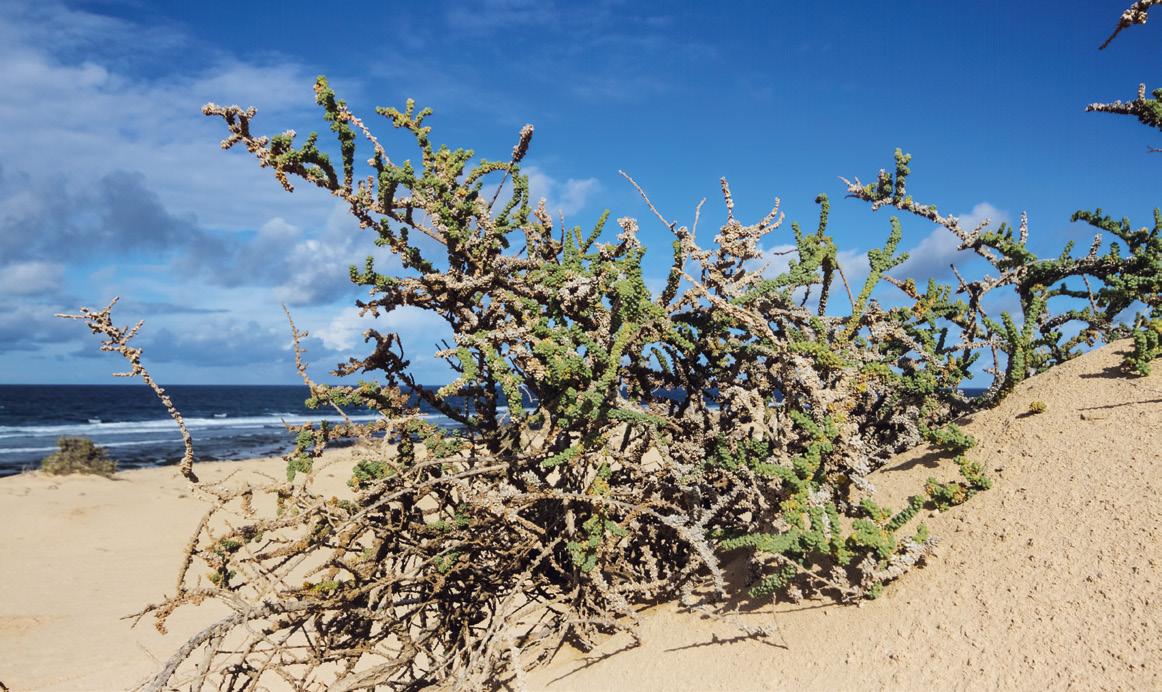

The flora that has evolved to cope with this situation has some very peculiar species. Especially the Zygophyllum, with its thick and bright green stems and leaves, is a typical sight. Move a little further inland, and soon you will encounter a score of other plants, such as Bassia, Saltwort and Balsam Spurge (see flora chapter for more detail).
The white sandy beaches would be just as attractive to migrating birds as the rocky shores, if it weren’t for the fact that they are so busy with tourists. Sunworshippers and (worse!) surfers of all sorts have left most beaches too disturbed to attract birds.
Hence, the best beaches (from a naturalist’s perspective) are those with large sand banks off the coast (see route 12). These are still frequently used by birds, such as Sandwich Tern, Yellow-legged Gull and a variety of waders.
There are white-sandy beaches and black-sandy beaches. The white sand comes largely from the
A limpet on the coastal rocks of the Cuchillos de Vigán (Fuerteventura). This is one of the few places where the Fuerteventura Limpet can still be found in good numbers.
The threatened Fuerteventura limpet
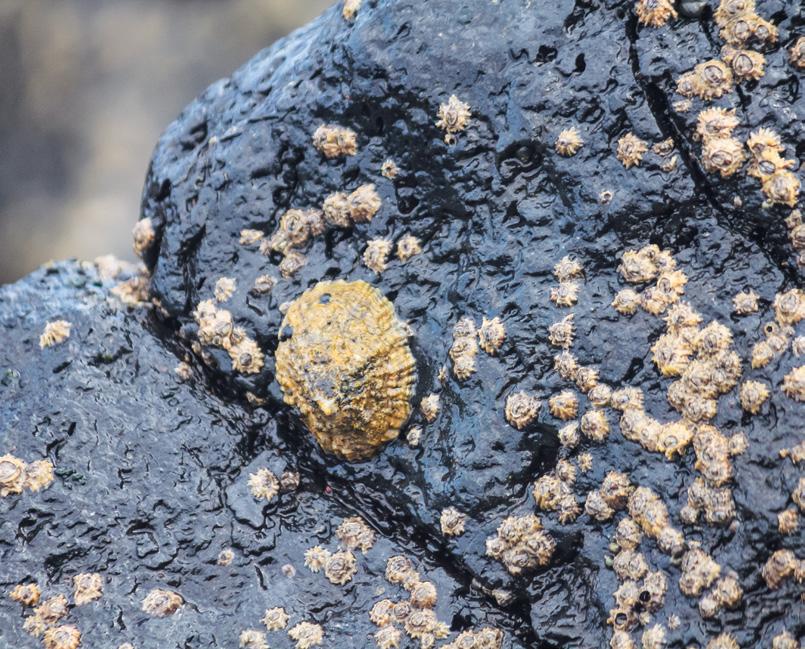
Limpets (Lapas in Spanish) are an important source of food for birds, fish and people. Their high commercial value has made them an important marine resource in the islands’ economies. It has even been suggested that overcollection was instrumental in the extinction of Canary Islands Oystercatcher (see page 86). Limpets have been cooked and eaten since the days of the Guanches. They are still considered to be a delicacy.
Limpets attach themselves to the substrate, usually rocks, where they feed on algae. A by-word for intractable immobility, it is surprising to realise that, when submerged, they slowly move by wave-like muscular contractions to graze the algae. They ‘clamp down’ onto the rock surface with considerable force when water currents are strong or when it is exposed to sunlight at low tides. Limpets can grow old. A tagging experiment showed they can live up to 20 years.
There are four species of limpet on the Canary coast. The Fuerteventura Limpet (Patella candei) is endemic to the Macaronesian region, but has disappeared from all islands except Fuerteventura, the islet of Los Lobos and the Salvagen Islands (between the Canaries and Madeira). It is an endangered species, limited to certain parts of the coast, especially the protected Natural Monument Cuchillos de Vigan and Parque Natural de Jandía. The species is protected throughout the islands during the peak months of reproduction (September to April). In some areas they cannot be harvested at all.
sea and consists of crushed shells mixed with volcanic sands. Apart from creating a beautiful white beach, they also produced extensive dune systems, with attractive flora and birdlife (see page 41).
The black beaches are of basaltic origin. They are usually small and squeezed between cliffs. Such beaches themselves are not very attractive for naturalists, but the nearby cliffs and tidal pools certainly are (see page 85). A black beach in between two rocky headlands is almost without exception a good place to snorkel – that is if the sea currents aren’t so strong as to make it dangerous.
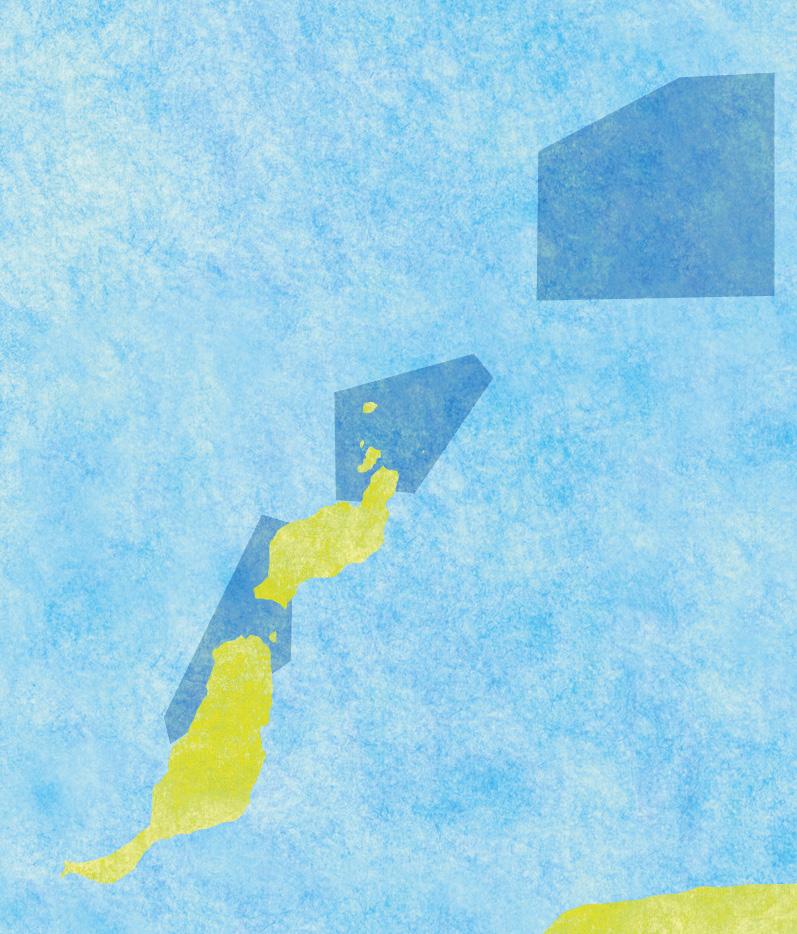
The warm and clear water of the ocean surrounding the Lanzarote and Fuerteventura supports a rich, varied, and extremely colourful underwater life. As tormented and battered by the elements the islands may seem, as exuberant and lush are their submerged foundations. In the Canary waters, over 550 species of fish have been recorded, including numerous species of ray fish, parrot fish, sharks, moray eels and barracudas. There are colourful sea snails, sea stars, sea urchins, and various corals. Also, there are dolphins, whales and sea turtles. Obviously, all these species do not occur in the ocean at random. The life forms that are present under the surface vary with substrate (sand or rock), the physical structure of the seabed (submarine lava takes on a huge variety of shapes), water depth, light, temperature and current. The first marine habitat you encounter when you put on your goggles and swim out from one of the black beaches is an extreme one. In the surf zone, waves wash ashore and the sand is constantly moving. For nearly all forms of life, this constant movement is too much to handle. If you move away a little from the coast (depths of about 1.5 metres), the surf is less noticeable and with good light, temperature and oxygen conditions, this can be a superbly rich zone. The best places are the rocky ones, where a variety of corrals, algae,

sea weeds, shellfish, sea urchins and other species can attach themselves to the sea floor. This attracts many fish.
Sandy areas are usually poorer, due to the movement of sand in the current, which prevents animals, algae or higher plants to attach themselves to the seabed. Such places are like a submerged desert. The situation is quite different where extensive sea grass beds anchor the sand. In this habitat, marine life abounds as well.
This difference between sandy and rocky can be very striking if you happen to snorkel in a sandy area with rocky ‘islands’. Swarms of colourful fish swim over these rocky bits like flies over cow dung – the sandy areas in between appear to be lifeless. This is the ‘island’ theory all over again (see page 21), but this time under water.
On a much larger scale, these under water islands are also present further out in the ocean. Not all submarine volcanic eruptions created islands like the current Canary Islands. Sometimes there was not enough material to show above the water line, or the material was too soft and it eroded. What remains at these places are shallow zones in the middle of the ocean. Their ‘peaks’ may be 50 to 200 metres below the sea level but they rise from an ocean floor that may be 3 of 4 kilometres below, so they are still formidable under water mountains. In many areas away from the Canaries and further up to the Selvages, there are shallow parts in the ocean, and they are like islands of marine biodiversity in the midst of the ocean. Larger fish and schools of fish occur here close to the surface.
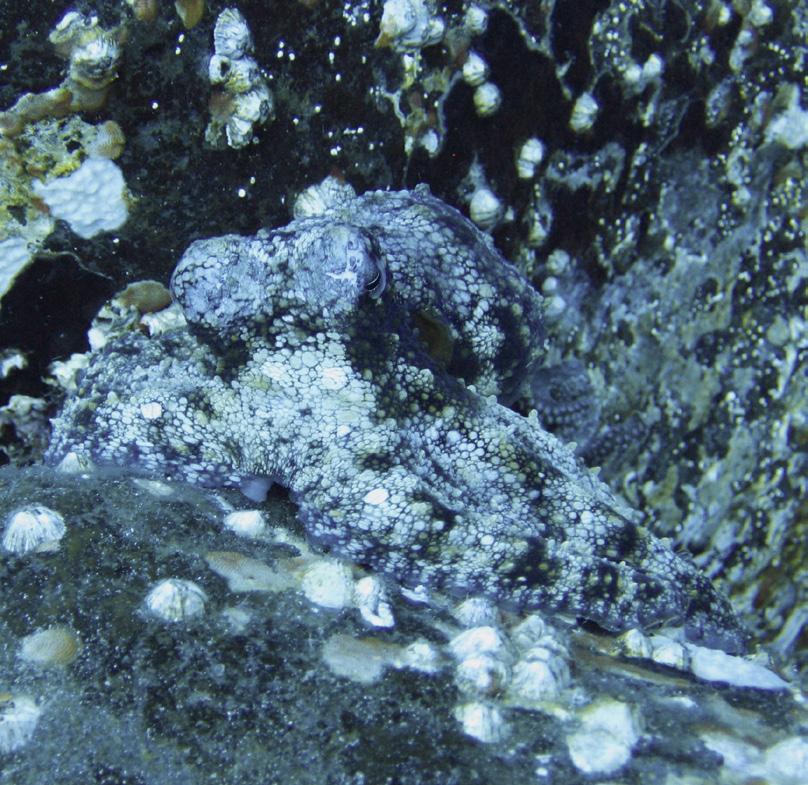
One important example is the Banco de Concepción (see map on page 35) which is not only rich in plankton and fish, but also an important feeding area for sea birds and sea mammals.
Further below in the deep sea, life becomes sparser as you sink further down and the pressure increases, the temperature drops and the light dims. The deep water is called the pelagic zone and contrasts sharply with the life-rich water near the coast.



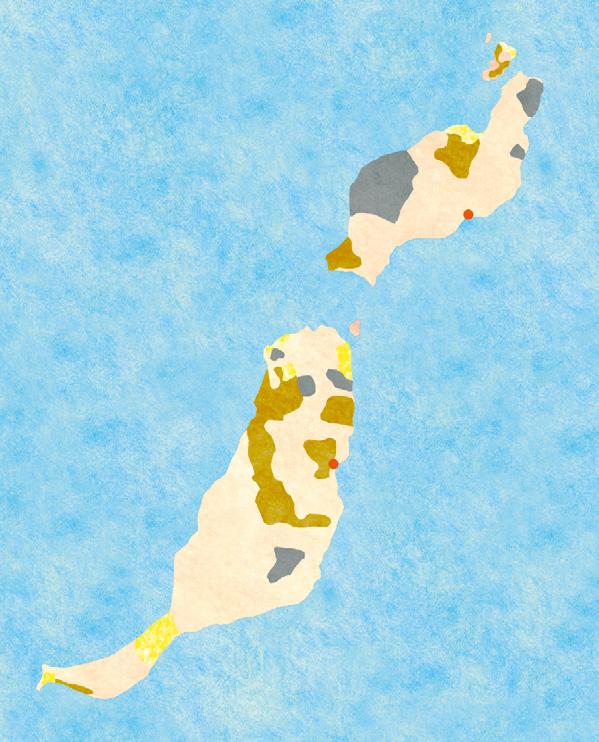
On Lanzarote, shrubby and stony desert plains and arid fields feature prominently on routes 3, 5 and 6, and site J. Expanses of sand dunes are present on route 3 and 6. Lava fields dominate in parts of route 2 and 5, and site H on page 121. On Fuerteventura you explore shrubby and stony desert plains and arid fields on routes 7, 8, 9 and 12, plis sites C and F. Sand dunes are present on route 7, 8 and 12, and above all on sites sites A (page 147) and H (page 151. ‘Malpais’ lava fields dominate on site B on page 147.
In how many ways can a landscape be empty? Come to Lanzarote and Fuerteventura and find out. Drive over the Tindaya plains (route 8) on a warm afternoon and the bright light, the heat, the silence and lack of life makes for a mindnumbing experience. If there is any life at all, it will be obscured by the heat haze. But if you return late in the evening (or early morning) armed with a knowledge of the right spots gleaned from this book, you will notice that life emerges on the unforgiving desert plains. With a little patience and close observation, you’ll find the Canarian desert to be inhabited by a fascinating flora and fauna, adapted to cope with a hostile environment by keeping a low profile during the hot and dry periods and taking advantage of the cooler and moister moments. The majority of the islands’ surface is climatically a desert. However, the Canarian desert is, if you look carefully, strikingly different from that of the nearby Sahara. In fact, it has a unique flora and fauna, partly because this ecosystem developed in isolated conditions (see page 21), and partly because the ocean air evens out the temperatures and increases the moistness of the air, even if the amount of rainfall is still very low. The Canarian desert takes on four different forms: shrubby desert on volcanic hill slopes, vast, stony plateaux with some dry, arable farmland,

Lanzarote and Fuerteventura have a flora and fauna that is poor in total numbers of species but very rich in endemics – species that are confined to a very small region of the world. Much of what you find here, you’ll find nowhere else, except, in some cases, on the other Canary Islands. This is what makes Lanzarote and Fuerteventura such special places. Harbouring a large number of endemics is a typical feature of islands (see below and the evolution chapter on page 21).
Since Lanzarote and Fuerteventura are so close to one another, they are biologically speaking very similar. Yet, they are also part of the Canary Island archipelago, which is in turn part of a collection of archipelagos (Canary Islands, Madeira, the Cape Verde Islands and the Azores) known as the Macaronesian region. This makes them ecologically an island within an island within an island. This “Russian (Babuschka) doll” effect is strikingly visible when looking at the endemic species. A large portion of the flora and fauna on Lanzarote and Fuerteventura are part of the biggest ‘babuschka’ – that of the larger Macaronesian region. Plain Swift, Berthelot’s Pipit and the Canary (the bird) are endemics on this Macaronesian level, as are many plants of the higher slopes. On Lanzarote and Fuerteventura many of these species are relatively scarce, since they are typical of the milder climates which are not well represented on the eastern Islands. Obviously, the eastern islands share a good number of species with the other Canary Islands, (the babuschka within the babuschka of Macaronesia). Examples are Verode (Kleinia), Canary Spurge and the Canary subspecies of birds like Kestrel and Buzzard. Since Lanzarote and Fuerteventura are much hotter and drier, they also have their own species that are not found elsewhere. The odd looking Burchard’s Caralluma (see flora chapter) is an example of an East Canary endemic. Finally, at the smallest babuschka level, there are even species that occur only on one of the islands, or even only at a small part of one island. Good examples of those are the Fuerteventura Stonechat
A lone Creamcoloured Courser in the white sands of Corralejo, Fuerteventura. This is how the flora and fauna of the eastern islands manifests itself - a sudden gem, hidden in a wide and seemingly empty landscape.
64 (only on Fuerteventura) and the Jandía Spurge (only on the Jandía Peninsula of that same island).

Apart from the endemics, Lanzarote and Fuerteventura also share many species with arid North Africa and the Mediterranean. Being close to the continent and having a similar climate, the African influence is prominent, with species like Cream-coloured Courser, Trumpeter Finch, Houbara Bustard and Plain Tiger, a spectacular butterfly. Mediterranean species occur as well. There are many Mediterranean plants, but also birds like Sardinian and Spectacled Warblers, Lesser Short-toed Lark and Eleonora’s Falcon.
Two endemic sealavenders. The Warty Sea-lavender* (top) with its typical zigzag inflorescence is restricted to two Macaronesian archipelagos, while Felty Sea-lavender* (bottom) occurs only on Lanzarote and Fuerteventura.

Finally, there is the large group of species that have been introduced, by accident or design, by humans. Large numbers of weeds from the Mediterranean, some rodents, garden plants and goats are all newcomers to the islands. Some of them have had a huge impact on the natural world of these islands.
Total
Macaronesian endemic

Berthelot’s Pipit

Anthus berthelotii
All dry habitats
Introduced
Barbary Ground Squirrel
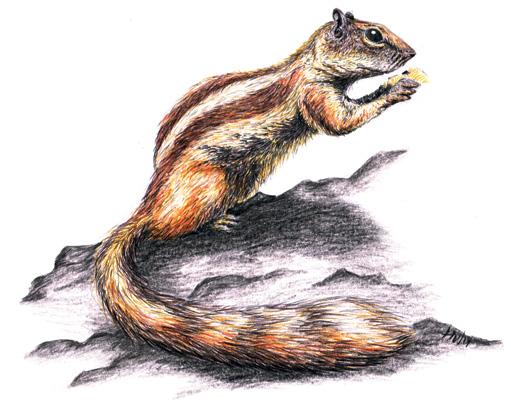
Atlantoxerus getulus
Barrancos
Eastern Island endemic (Lanzarote and Fuerteventura)
Burchard’s Caralluma

Caralluma burchardii
Lava fields
Fuerteventura endemic
Canary Island Stonechat
Saxicola dacotiae

Barrancos
African Sahara Sahara Bluetail
Ischnura saharensis
Temporary pools

The best botanical routes on Lanzarote are route 4 and to a lesser extent, route 3. There are also interesting wildflowers to be found on the walks E, G and H on pages 120-121.
On Fuerteventura, the richest wildflower haunt is the Pico de la Zarza (route 13), but routes 7, 8, 10, 11 and 12 have interesting wildflowers to offer as well.
The flora of the Canary Islands is famous amongst botanists for its variety, spectacular and oddly shaped plants, many endemic species, and for being a refuge of a flora of humid, subtropical environments. Such environments were once widespread in the Tertiary period, but are now confined to the Atlantic islands.
This huge botanical wealth is not evenly spread across the Canary Islands, though. Unfortunately, Lanzarote and Fuerteventura are the most poorly endowed. In fact, the eastern islands are often classified as those ‘where nothing grows’ or as being mere ‘chunks of the Sahara desert tossed into the Atlantic’. At first glance you may be seduced into believing this, but – fortunately – it is far from the truth. Lanzarote and Fuerteventura do indeed lack the lushness of the western islands, but there is still a lot to discover. In fact, they each have more endemic plant species than the entire UK!

To understand the seemingly paradoxical status of the flora of the eastern islands – on the one hand poor and barren and yet, on the other, rich in endemic species – you need to consider the isolation of the Canary archipelago as a whole. As a result of this isolation, the flora abounds in endemic species that evolved on the spot from only a few ancestral species (see also evolution chapter on page 21). Hence, only few plant families occur, but many of these are present with a high variety of often endemic species. In the case of the Canary Islands, these are the spurges (Euphorbia), Viper’s-buglosses (Echium), Marguerites (Argyranthemum), Sow-thistles (Sonchus), and, above all, the houseleeks, of which entire genera are completely or largely endemic to the Canaries (e.g. Aeonium, Aichryson, Greenovia and Monanthes). These groups consist of many species, each adapted to its own specific environmental condition, one of them being the hot, dry and sunny climate of Fuerteventura and Lanzarote. Isolated from their relatives on other islands, they have in turn evolved into their own proper species. The spectacular Decaisne’s Viper’s-bugloss* (Echium decaisnei ) has a relatively wide range, encompassing Lanzarote, Fuerteventura and Gran Canaria, but others are more restricted: Bonnet’s Viper’s-bugloss* (Echium bonnetii ) is unique to Fuerteventura; Lanzarote Viper’s-bugloss* (Echium pitardii ) is endemic to that island while Jandía Viper’s-bugloss* (Echium handiense) is restricted to the peaks of the Jandía peninsula of Fuerteventura. Jandía Spurge* (Euphorbia handiense), the most cactus-like of all the Canarian spurges, has a similarly restricted range. Etcetera, etcetera. Lanzarote and Fuerteventura are not high enough to catch the moisture from the trade winds that support the laurel and pine forests of the western islands. The rich flora of these vegetation zones is absent from Lanzarote and Fuerteventura except for a handful of relict specimens that cling onto the highest north-facing cliffs of La Jandía and Famara (an indication that these forests once existed here as well). Though largely lacking the moisture-demanding flora of the western islands, Lanzarote and Fuerteventura have their own attractions. They support a number of plants with affinities to the Mediterranean and arid regions of Africa that are rare or absent on the other Canary Islands.
The Shrubby Launaea is the most common and widespread shrub of both Lanzarote and Fuerteventura. It flowers year-round, but usually only with a couple of flower heads at a time.

68
To these groups belong an endemic species of Fennel, Yellow Cistanche, Opophytum (a strange relative of the ice plants) and many others. Perhaps the most typical desert plant of Lanzarote and Fuerteventura is Burchard’s Caralluma – an endemic cactus-like plant of the Milkweed family that has many relatives in the mountains of northern Africa and the Middle East.
The Pinnate Lavender is a plant of slopes with a little shade and moisture, such as the cliffs of Famara (route 4).

Notwithstanding this optimistic introduction, you’ll find, as you drive through the interior of either of the islands, the landscape is pretty much a barren one. Except for a couple of hardy plants, most notably the spiny Shrubby Launaea* (Launaea arborescens), the equally thorny Canary Boxthorn* (Lycium intricatum), Mediterranean Saltwort (Salsola vermiculata), and the tall, Sodom’s-apple Milkweed (Calotropis procera) the land is largely empty with even these plants usually looking as if they have lost hope of better times. In fact, the only plant that seems to prosper is the parasitic Alfalfa Dodder, which frequently smothers the Shrubby Launaeas. The ground-hugging Canary Aizoon and Common Ice Plant are other frequent species, as is the flimsy, two-metre-high stalk of the Tree Tobacco – an introduced species that does well on disturbed lands. How different to this image is the natural climax vegetation: a scrubland containing a variety of succulent (thick-stemmed, water storing) bushes, in which the aforementioned Shrubby Launaea and Canary Boxthorn are common, but grow alongside spurges, viper’s-buglosses, sow-thistles, houseleeks and lavenders.
A good way to understand the flora of Lanzarote and Fuerteventura is to see it as an attempt to develop from the sorry-looking Launaea-boxthorn desert into the much richer succulent scrub – an attempt that only truly succeeds in very specific places, namely old lava fields, upland areas and cliffs, and here and there along roadsides.
The succulent scrub is a typical Canary vegetation type, found on all the islands and in a small area on the nearby African coast. Because of the many endemic and succulent species, it is radically different from any Mediterranean scrub. The places where you’ll find this vegetation on the eastern islands are on old lava fields (e.g. routes 2, 5 and 8) and upland areas (route 3, 4, 10 and 11). Old lava fields are too rocky to suit the needs of agriculture and are full of cracks in which plants can root. Those same cracks accumulate that little bit of soil and moisture that plants need to grow – something that is lacking in the young lava fields, which is why these are devoid of plants. The mountains, even though they barely reach over 600 metres, tend to hold clouds longer and receive a bit more rain – hence they too support a richer succulent flora. Interestingly, also roadsides frequently surprise with some wonderful patches of succulent flora. Some of these obviously have been planted, but others, especially the herbs and weeds, clearly established spontaneously. The common succulents are Verode (Kleinia neriifolia), Balsam Spurge (Euphorbia balsamifera) and King-Juba’s Spurge (Euphorbia regis-jubae ; sometimes referred to as E. obtusifolia). The Verode looks a bit like a bonsai Dragon Tree, whereas both spurges are spherical bushes that primarily differ in the shape of their leaves. In the lava fields, they are frequently joined by Moon Dock and Zygophyllum (see page 33). The star species of the lava fields is the rare, square-stemmed Burchard’s Caralluma – one of the strangest plants of the eastern islands. It flowers only in winter and early spring. Even then, only one in hundred-or-so plants will carry the typical wine-red flowers frosted with white velvet. What’s special about the Caralluma is that it is one of the very few plants

The three main players of the succullent scrub: King Juba’s Spurge with its long leaves (top), Balsam Spurge with its oblong, small leaves (centre) and Verode, which looks like a miniature tree (bottom).


70 on the Canaries with a true cactus growth form: no leaves and only a swollen stem that does the job of photosynthesis. On the mainland of Europe, another species of Caralluma grows in the Almería region of Spain – this is the only native cactus-like plant of the continent. In upland areas, the flora is much richer and includes flowery bushes of lavender, marguerite (Lanzarote and Fuerteventura each have a different species), Decaisne’s Viper’s-bugloss, East Canary Sow-thistle* (Sonchus pinnatifidus) and various houseleeks (Aeonium and Aichryson). At these altitudes you’ll also encounter many annual and perennial herbs, which flower in winter and early spring, such as the bright yellow Lanzarote
Wildflowers of succulent scrub of lava fields
Balsam Spurge (Euphorbia balsamifera)CAN, King Juba’s Spurge (Euphorbia regisjubae)CAN, Lanzarote Bird’s-foot-trefoil (Lotus lancerottensis)LF, Burchard’s Caralluma (Caralluma burchardii)LF, Thick-leaved Fluellen* (Kickxia heterophylla), Pinnate Lavender (Lavandula pinnata)MAC, Canary Aizoon* (Aizoon canariense), Ice Plant (Mesembryanthemum crystallinum), Small-leaved Ice Plant* (Mesembryanthemum nodiflorum), Verode (Kleinia neriifolia), Fagonia (Fagonia cretica), Patellifolia (Patellifolia patellaris), Moon Dock (Rumex lunaria), Shrubby Heliotrope (Heliotropium erosum)
Wildflowers of succulent scrub of the mountains Balsam Spurge (Euphorbia balsamifera)CAN, King Juba’s Spurge (Euphorbia regis-jubae)CAN, Canary Spurge (Euphorbia canariensis), Jandía Spurge (Euphorbia handiense)F, Canary Rockrose (Helianthemum canariense), Thyme-leaved Rockrose (Helianthemum thymiphyllum)LF, Lanzarote Viper’s-bugloss (Echium pitardii)L, Bonnet’s Viper’s-bugloss (Echium bonnetii)CAN, Decaisne’s Viper’s-bugloss (Echium decaisnei)CAN, Campylanthus (Campylanthus salsoloides)CAN, Verode (Kleinia neriifolia)CAN, Pastor’s Asparagus* (Asparagus pastorianus), Broad-leaved Squill (Scilla latifolia), Rosy Garlic (Allium roseum), Fagonia (Fagonia cretica), East Canary Sowthistle* (Sonchus pinnatifidus)LF, Lanzarote Houseleek (Aeonium lancerottensis)
L, Sweet Houseleek* (Aeonium balsamiferum)CAN, Lanzarote Giant Fennel* (Ferula lancerottense)LF, Fuerteventura Gold-coin* (Asteriscus sericeus)F, Lanzarote Gold-coin* (Asteriscus intermedius)L, Common Asphodel (Asphodelus aestivus), Thin-leaved Asphodel* (Asphodelus tenuifolius), Willow-leaved Carline Thistle* (Carlina salicifolia)MAC, Narrow-leaved Nettle* (Forsskaolea angustifolia)CAN , Morroccan Reichardia* (Reichardia tingitana)
L = endemic to Lanzarote F = endemic to Fuerteventura
CAN = endemic to Canary islands MAC = endemic to Macaronesian islands
Bird’s-foot-trefoil, the purple Fagonia, Morroccan Reichardia* (Reichardia tingitana; a dandelion with a dark centre of the flower-head) and the small Lanzarote Viper’s-bugloss (Echium pitardii; replaced on Fuerteventura by Bonnet’s Viper’s-bugloss – E. bonnetii ).
Since drought and – on Fuerteventura – herbivores are the main challenges to plants, it is not surprising that the best botanical refuges are steep cliffs. The higher refuges and those facing the north are considerably less affected by drought and solar radiation. Such cliffs are found in the mountains of Betancuria and, as noted, in La Jandía on Fuerteventura and Famara on Lanzarote. These are by far the richest plant haunts, harbouring the bulk of the endemic species found on both islands.
More than 100 km apart, both the Famara and the Jandía cliffs are ecological islands in themselves. Hence the plants growing here have frequently developed into distinct species but are related to those that grow in similar conditions on the western islands. These are the groups for which the Canary flora is so famous: the houseleeks, the marguerites, the viper’s-buglosses and the sow-thistles.
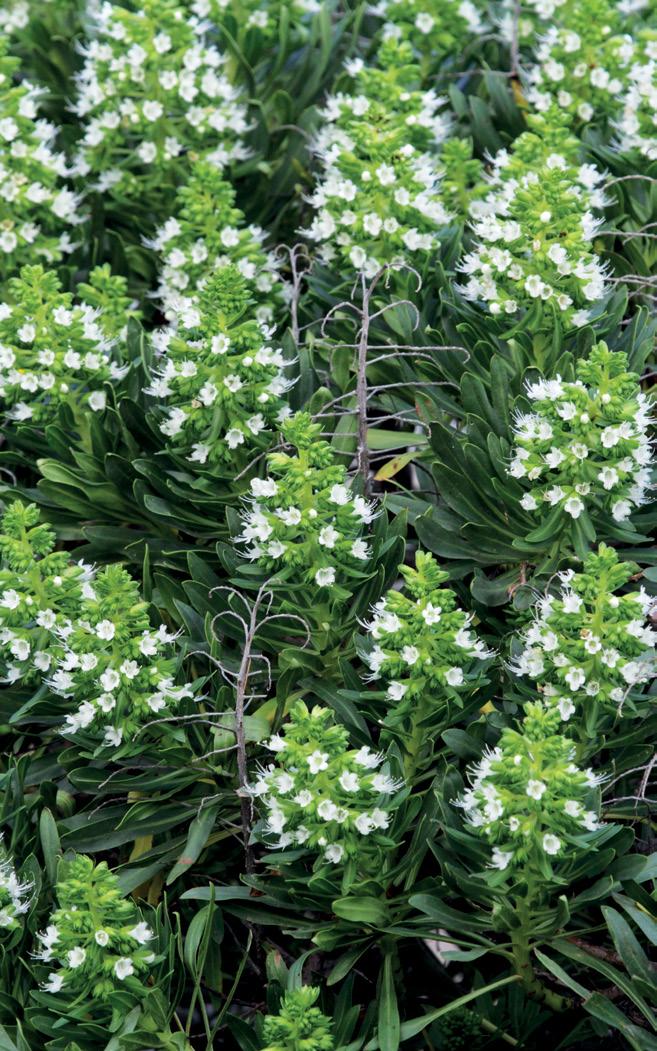
Canary Oak Fern (Polypodium macaronesium), Canary Buttercup (Ranunculus cortusifolius) MAC, Sycamore-leaved Mallow* (Lavatera acerifolia)L, Famara Reichardia (Reichardia famarae), One-styled Curry Plant (Helichrysum monogynum)L, Felty Sea-lavender* (Limonium puberulum)LF, East Canary Houseleek* (Aichryson tortuosum)LF, Betancuria Houseleek* (Aichryson berthencourtianum) F, Loose-flowered Monanthes (Monanthes laxiflora)CAN, Bolle’s Volutaria (Volutaria bollei)LF, Jandía Viper’s-bugloss (Echium handiense)F, Jandía Hare’s-ear (Bupleurum handiense)LF, Ifloga (Ifloga spicata), Winter’s Marguarite* (Argyranthemum winteri)F, Barbusano Laurel* (Apollonias barbujana)MAC
The spectacular Decaisne’s Viper’sbugloss is an uncommon plant of wellvegetated barrancos. It is often planted as an ornamental shrub.
Increasingly reported in recent years, the breeding of Red-billed Tropicbird on the Canary Islands was finally confirmed on Lanzarote in 2013, but it remains a very rare bird.

Species Population Observation Location period
Cory´s Shearwater > 1000 Feb - mid Nov all islands
Barolo Shearwater < 1000 Jan - Dec Chinijo
Bulwer´s Petrel ~ 1000 Feb - Sept All Islands except Fuerteventura
White-faced < 100 Feb - June Montaña Clara
Storm-petrel
European Storm-petrel > 1000 June - Oct Alegranza
Madeiran Storm-petrel < 1000 late Sept - mid Feb Lanzarote, Chinijo
Yellow-legged Gull > 1000 Jan - Dec all islands
Red-billed Tropicbird < 50 mostly Sept Chinijo/ Fuerteventura
Sanderling is a winter visitor and passage migrant. Little flocks play catch chase with the foam along the beaches in morning and in the evening when there are not too many people about. The beaches and sand banks off the coast attract the same birds. The most frequent tern is the Sandwich Tern which is found both in winter and during migration. It
is often found in small numbers, resting on beaches or patrolling the nearby surf. On migration, numbers in excess of a thousand are sometimes recorded.
Of the few wetlands that may attract waders, the saltpans on Lanzarote are the most important. Many of the waders mentioned in the previous paragraph also occur on the salt pans, and often in higher densities. In addition, this is the place to add Black-winged Stilt, Little Egret, Little Stint and stray rarities to your list. Whereas salt pans are found on Lanzarote and Isla de Lobos, the freshwater reservoirs are typical of Fuerteventura. Many of them are not maintained and have silted up, but the main reservoir, that of Los Molinos (route 9) attracts many birds. The fact that it is artificial, doesn’t deter the birds. The Coot is
Two common waders in winter and during migration: the Grey Plover (top) frequents rocky coasts, while flocks of Sanderling (bottom) can be found on quiet sandy beaches.

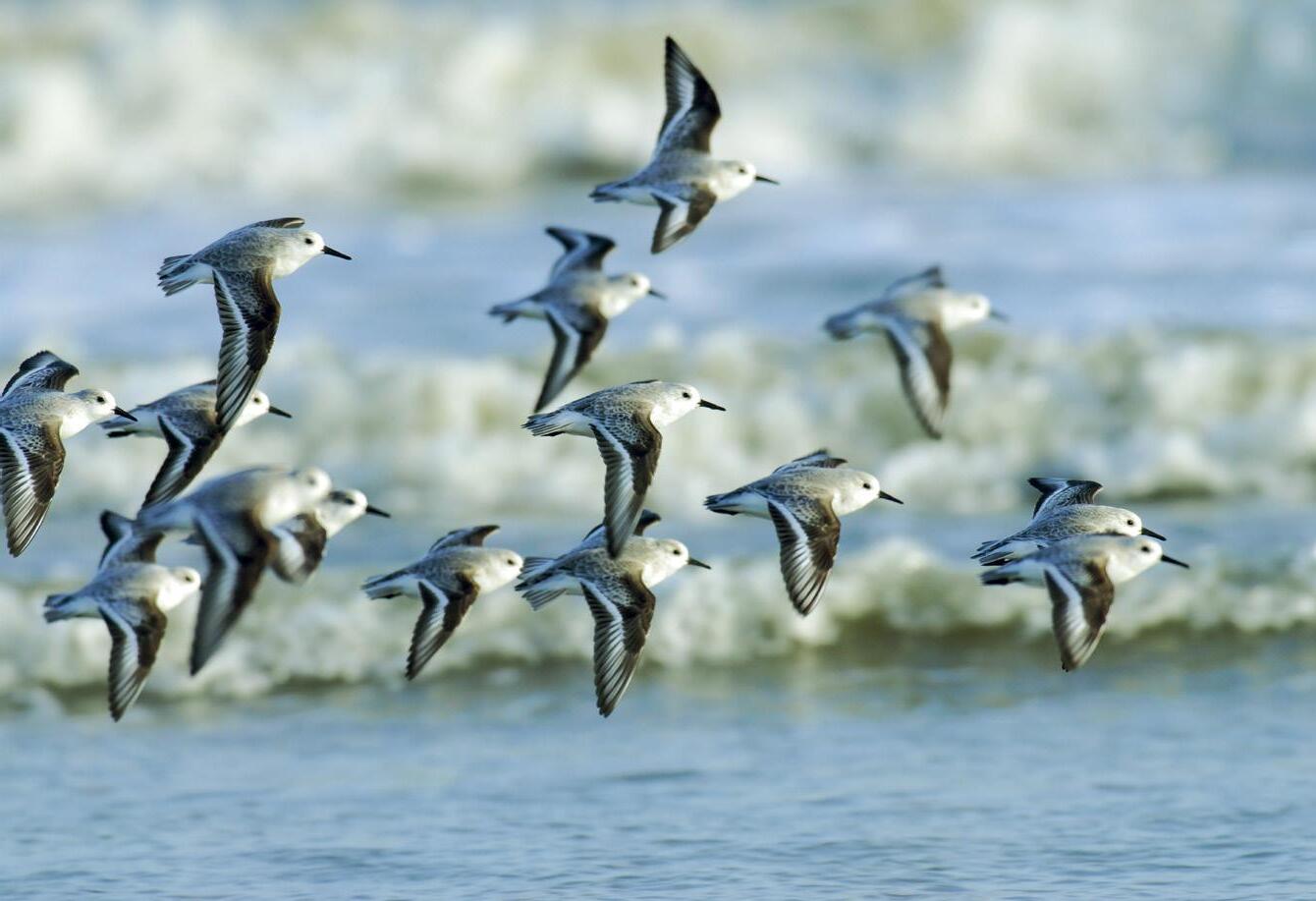
 Artwork by Henrik Gronvold (1858–1940)
Artwork by Henrik Gronvold (1858–1940)
In recent times, three Canarian birds, one full species and two subspecies, have become extinct. The Canary Black Oystercatcher (Haematopus meadewaldoi) once roamed the coasts of the eastern islands. It was endemic to Fuerteventura, Lanzarote and the Chinijo archipelago (the islands north of Lanzarote). It was a resident bird that has never been recorded outside this area. Only four birds were ever collected, the last one being on La Graciosa on June 3, 1913. The naturalist Bannerman published a lithograph of this bird (reproduce here) and wrote about the event:
“For fear of disturbing the bird, in case it should still be about, we crawled the last fifty yards through the prickly scrubs. Eagerly we scanned the black rocks, which here run some way out to sea, and suddenly the sharp eyes of our guide spotted the bird. It was feeding not a hundred yards below where we were lying, running nimbly over the rocks. As I raised my head, the bird got up, uttering a sharp ‘peepe-peepe, peepe-peepe’, twice repeated. It was a long shot, but I dared not risk allowing the Oystercatcher to leave the island, so fired on my knees, and to my intense joy the bird fell into the sea”.
The locals of La Graciosa reported it until around 1940. In the mid1980s a large survey was held on all the islands of the Chinijo archipelago, but failed to find any evidence of the species’ survival. It is unclear what tipped the bird into extinction. Probably the population was naturally small
the most common breeding bird, with the largest population in the reservoir of Los Molinos. It is a recent colonizer with highest numbers in the winter. The Moorhen is also frequent.
More exciting is the Ruddy Shelduck, which started to breed on Fuerteventura in 1994 and now has a firmly established breeding population. Today it can be found all around the island, even far away from water. It has also profited from the establishment of golf courses with their fresh green grass.
Most inland reservoirs and the deeper barrancos, dry or not, have a fringe of tamarisks and other large plants. Both Little Egret and Cattle Egret breed in such places. The shrubs are the favourite haunts of Sardinian
and vulnerable, and hunting and overharvesting of limpets, the bird’s main food source, pushed it over the edge. The final twist in the tale is that in 2019 a DNA test suggested this bird was probably not a full species but a subspecies of Eurasian Oystercatcher.
Another loss for the Chinijo archipelago is the disappearance of the ‘Chinijo Chat’ a local race of the Fuerteventura Stonechat, which only lived on the islets of Alegranza and Montaña Clara. This is puzzling, since no chats have been found breeding on Lanzarote and La Graciosa which lie between these small islets and Fuerteventura where the Fuerteventura Stonechat breeds. This is despite the availability of apparently suitable habitat. Perhaps the eruption of the Timanfaya volcanoes on Lanzarote are responsible for the gap in distribution of this chat. The Chinijo form became extinct in the early 20th century, perhaps due to the introduction of predators or goats.
Finally, the Lanzarote race of the recently ‘split’ Canary Islands Chiffchaff (exsul) was unique to the relatively moist Haria valley, were it persisted into the 1980s. It probably became extinct when the natural habitat of shrubby vegetation disappeared due to a combination of goat herding, agriculture and increasing aridity. Haría and Betancuria are among the few places where another bird of shrubs and trees occurs: the East Canary race of the African Blue Tit. Hopefully, this bird won’t meet the same fate as the Chiffchaff.

Warbler and also attract many migratory songbirds. When water levels drop, the exposed muddy puddles attract migrating Greenshank and Common Sandpiper. These too are especially common in winter, at which time small, temporary pools form in many barrancos.
Villages are natural oases on both islands. The gardens and small parks, with their tall vegetation provide shelter to many birds, while the surrounding fields, some of which are irrigated, provide food. Corn, figs, almonds or vines are cultivated, all on a small scale. This rural idyll is home to Linnets, Corn Buntings, Spanish Sparrows and Iberian Grey
88 Shrike. Look carefully among the doves. Collared Dove is very common, but Turtle Dove occurs in the summer months and Laughing Dove and African Collared Dove are also present in small numbers. The striking Hoopoe is widely distributed over the islands, but most common in and around agricultural lands.
The secretive Quail is also tied to agricultural land. Its numbers fluctuate enormously. In springs following relatively wet winters, the crops are doing well and Quails are quite common. In other years, they are almost absent.

Closer to villages with gardens and groups of palm trees, you’ll encounter more members of the finch family. Linnet, Greenfinch and Goldfinch may be seen, although the latter two are quite rare. This is also the place to look for that most famous of all the Macaronesian endemic birds: the Canary. This wild predecessor of the familiar cage bird is very common on the western islands, but arrived on Fuerteventura and Lanzarote relatively recently. Its distribution seems to be restricted to some of the moister valleys with high shrubs and some tourist resorts. The gaps between the leaf stubs of palm trees are a favourite nesting site of the Spanish Sparrow, the only sparrow species on the island. They form noisy groups in most settlements, although there are also colonies in uninhabited places. Outside the breeding season they spread out over the islands looking for food on the plains.
Villages and Gardens are favoured by Plain Swifts, Pallid Swifts, Collared Doves, Sardinian Warblers and the Fuerteventura Blue Tit. The latter is
the rarest of the four Canarian subspecies of the African Blue Tit. It lives mainly in the valleys of, Betancuria (Fuerteventura) and Haría (Lanzarote), but it may be seen in other areas in low numbers. The Blackcaps you encounter here are mostly overwintering European birds. The Macaronesian heineken subspecies, which is so common on the western islands, may only very occasionally nest on the islands. Finally, in some tourist centres you may come across Laughing Doves, Monk Parakeets, Red-vented Bulbuls and Sacred Ibis. The Laughing Dove is sometimes present in large gardens but is not very abundant. It has recently been established on the islands, but its origin is not entirely clear. It could have escaped from captivity, but also could have reached the islands by itself from the nearby African coast. The Monk Parakeet is certainly an exotic species that escaped from captivity. The only stable population on Fuerteventura is concentrated in the tourist resort of Morro Jable on the Jandía penisnsula. On Lanzarote it can be found in some tourist resorts.


The Atlantic Lizard is the only native lizard of the islands. It is common in all habitats. This is a female. The males are larger and darker.
Eastern Canary Geckos are quite common in rocky areas, and most easily found by turning stones (they often cling to the underside of the rock you turn). The Atlantic Lizard is very common in many places, while the introduced Gran Canaria Giant Lizard occurs (but appears to be rare) in the Barranco del Torre (site E on page 148). The best chance of finding the rare and secretive Eastern Canary Skink is on route 11.
There are 14 species of reptiles on the Canary Islands, three of which occur on Lanzarote and Fuerteventura: a gecko, a skink and a lizard. In fact, all islands have a gecko, a skink and a lizard, each one closely related to those on the other islands.
The gecko is the Eastern Canary Gecko, endemic to Lanzarote and Fuerteventura. It is abundant on both islands. It even enters houses and, with luck, some geckos may move into your holiday apartment or local restaurant and lurk behind the lamp, waiting for an endemic Canary fly for dinner. Because of its nocturnal habits, it is rarely seen in the field except when you actively search for it.

The Eastern Canary Skink (again endemic to Lanzarote, Fuerteventura and the islet of Los Lobos) is the largest of the Canary Islands’ skinks. It can reach 25 cm but, in spite of its length, it is very hard to find. More than the other reptiles, it tends to avoid extreme heat, which is quite strong on the eastern Canary Islands. Therefore, it spends much of its life underground or in rock crevices. It has a scattered distribution over the three islands. On Fuerteventura, it only occurs in the humid valleys (relatively speaking) of the centre (between Vega de Rio Palma and Betancuria), near Timijiraque and La Oliva and on Jandía. On Lanzarote it occurs around the valley of Haría. In contrast, the Atlantic Lizard is widespread, abundant and highly visible on both islands and the nearby small islets. It occurs in all habitats from sea level up to the peaks. The Atlantic Lizard is of the genus Galiota, which is endemic to the Canary Islands. Galiotas are bulky animals, and some species have made it to true giants. The largest species lived on Tenerife and almost reached 1.5 metres. That one is extinct, but the species currently living on Gran Canaria measures almost a metre. This is all quite spectacular, but even more remarkable is the difference in average size of the various closely related species are. The Atlantic Lizard, the one found on Lanzarote and Fuerteventura, is the smallest of them all, the males measuring only a bit more than a Sand Lizard.
The Atlantic Lizard is omnivorous, feeding on invertebrates, seeds and flowers and becomes quite tame in gardens and holiday resorts. They are active throughout the year. The lizards are a so-called keystone species: an animal that plays a key role in the (original) ecosystem. On the one hand, it was (before the introduction of goats, rabbits and squirrels) the main herbivore on the islands, and on the other hand, it is staple food for Kestrels, Buzzards, Ravens and Great Grey Shrikes.
To find the Eastern Canary Gecko you need to – carefully – turn rocks in lava fields. In contrast to lizards, they usually stick to the underside of those rocks.
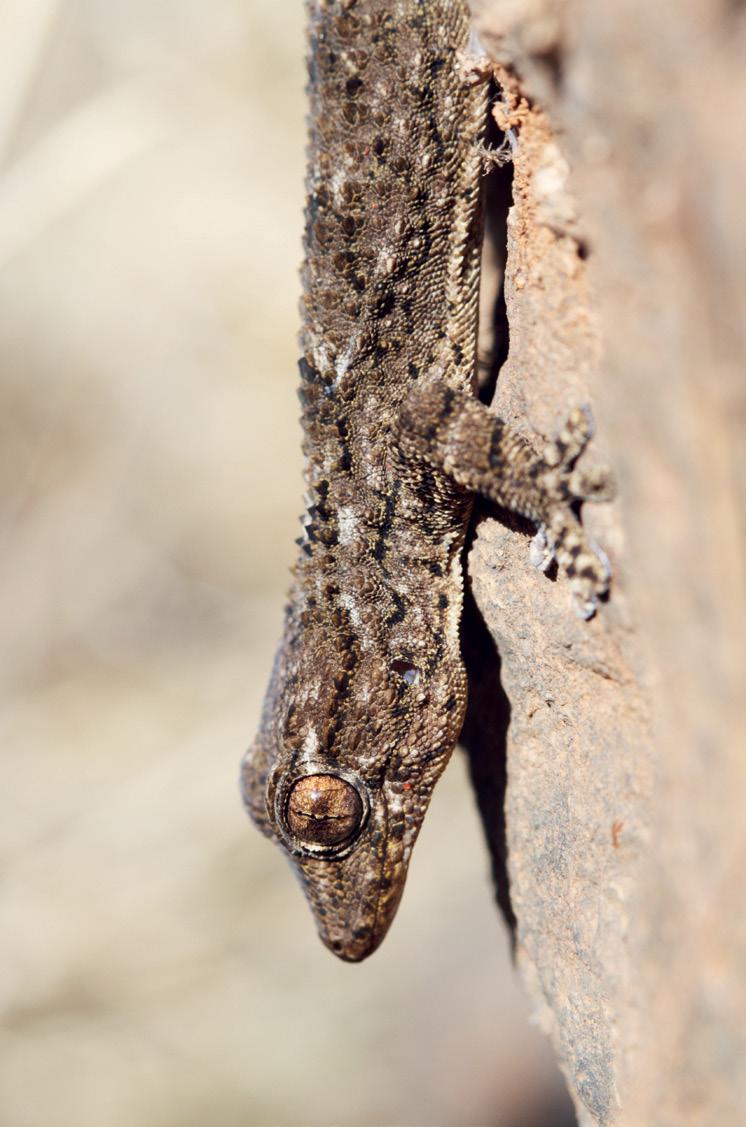
Two species of marine turtle are found in the waters around the Canary Islands. The most common of these is the Loggerhead Turtle, an oceanic species distributed throughout the world. The Leatherback Turtle, the largest of all living turtles, is only sporadically seen. None of them is now known to lay eggs on the islands, and so those seen in the Canarian waters are usually migrating.

Loggerhead Turtles once bred on Fuerteventura though, and there is a program to re-introduce them. After two centuries of absence, turtle eggs were brought from the Cape Verde Islands and put in nests on the beach in Cofete (Jandía, Fuerteventura). When the eggs hatched, the baby turtles were taken to a nursery in Morro Jable for 2 years. Between 2010 and 2013, 700 baby turtles have been released on Cofete beach, and it is hoped that they will return in 15 years and lay their own eggs on this beach.
Loggerhead Turtles are recognisable by the bill-like beak. It is not easily seen in the water, but dead animals sometimes wash on shore, much to the delight of the gulls.

The better vegetated areas attract most insects. Good butterfly haunts are found on route 4, 5 and 6, and site G (page 121) on Lanzarote. On Fuerteventura, route 10 and 11 are most rewarding. The flowery parks of route 10 and site G on page 150 attract butterflies like Monarch. The best dragonfly sites are routes 9 and 11 on Fuerteventura. On Lanzarote, the Famara cliffs (route 4), have a number of other interesting invertebrates.
The list of insects and other invertebrates on the islands is quite short but holds a few very interesting species. There is still very little known about the invertebrates of the islands. As late as 2012, a new species of beetle, Tarphius jandiensis, was discovered in la Jandía.
Insects and invertebrates are active throughout the year, but spring appears the time that the density and activity is highest.
Only 19 species of butterfly are found on Lanzarote and Fuerteventura. That isn’t many, but there are a few you won’t find anywhere but here. Early spring is the best time for most of them. Good numbers of a variety of ‘whites’ inhabit the dry hills. Most of them are the familiar Bath Whites and Small Whites, but among them are a number of real treats. One of them is the Fuerteventura Greenstriped White, a small butterfly with distinctly pointed wings and clear green stripes on its underwings. It is endemic to Fuerteventura where it flies over fields in the valleys, like those in Betancuria (route 10 and 11). Another one is the Greenish Black-tip, a small butterfly that is
The Greenish Blacktip is native to Africa and the east Canary Islands, with just two small populations in mainland Spain.

94 widespread in arid Africa. It looks a bit like a cross between a Bath White and a Clouded Yellow. Both the Green-striped White and the Greenish Black-tip are found on stony slopes with sufficient nectar plants. These sites are also the places to look for the blues, four species of which occur on the islands (Long-tailed, Lang’s Short-tailed, African Grass and Common Blues). More colourful butterflies are attracted to flowery patches, such as oases and gardens. Here you may find the resident Canary Red Admiral which has a wing pattern subtly different from the familiar Red Admiral (a migrant here). Both are attracted to flowers with lots of nectar. A few ornamental garden plants in a village are usually enough to attract the tiny Geranium Bronze (an accidental introduction from southern Africa). You need a little more luck to find the impressive orange Monarch – a large butterfly that flies around in large gardens and parks. It is the same species as
Monarch (left) and Plain Tiger (right) are both common butterflies, at least in some years. Both feed on plants of the milkweed family such as Sodom’s Apple Milkweed (right).

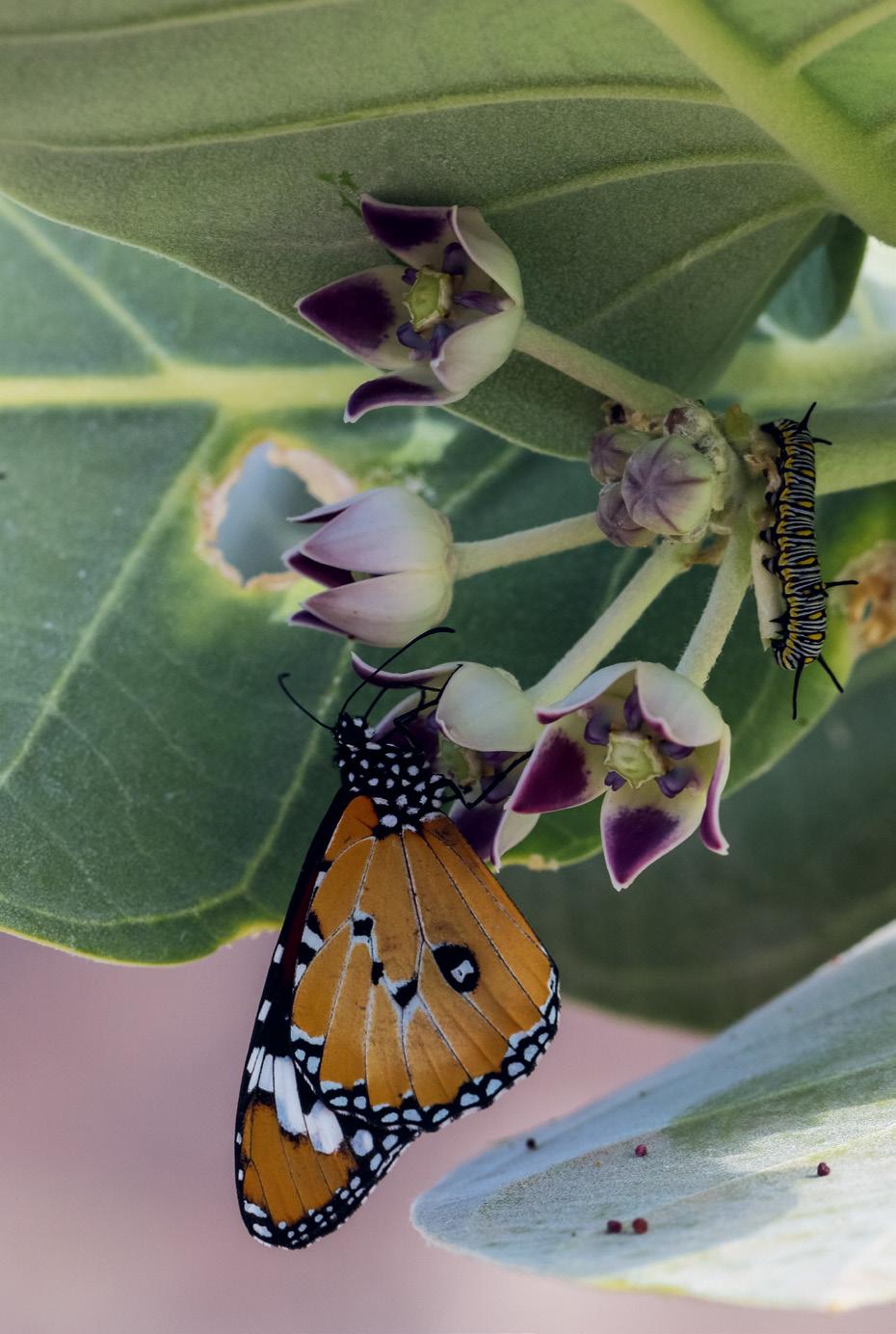
Lanzarote and Fuerteventura butterfly
the North American butterfly which is famous for its long migration to Mexico where it winters in enormous densities in trees. The population in the Canary Islands doesn’t undertake such impressive journeys. It is a resident that can be seen throughout the year. Its slightly smaller relative and look-alike the Plain Tiger is widespread and common in Africa, but quite rare on the Canary Islands. The small resident population is reinforced periodically by migrants from the mainland and can, at times, be abundant. Another butterfly that has erratic influxes into Lanzarote and Fuerteventura is the African Migrant. An aptly named butterfly – if they arrive on the islands, they usually do so in large numbers. There are accounts of hundreds of them invading the park of Costa Calma (route 12) overnight.
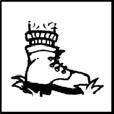
A visit to a pristine island. Good birdwatching, especially sea birds between March to October.
Ferry crossing € 26,- return fair; Bicycle hire € 10,- per day

Habitats: cliffs, sandy desert and dunes, succulent scrub s elected species: Traganum, Sea Spurge, Polycarpaea nivea, Common Dolphin, Hoopoe, Great Grey Shrike, Stone Curlew, Barbary Falcon, Eleonora’s Falcon, Osprey, Cory's Shearwater, Red-billed Tropicbird, Atlantic Lizard, Lanzarote Greenish Blacktip
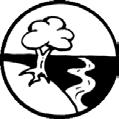

The small island of La Graciosa (meaning both 'the amusing' and 'the graceful' in Spanish) has only 700 inhabitants, divided between two small villages. The island measures 8 km in length and 4 km in width, and about 90% of its surface is covered with a (near)-natural vegetation of semi-desert and dunes. There is no place quite like it in the entire Canary Islands archipelago – at least no place you can visit, as the other islands of the Chinijo Archipelago are not accessible. All these islands, including La Graciosa and the sea between them, are part of a protected nature park.
There are two ferry companies with departures every 1 to 2 hours: Lineas Romero (www.lineasromero.com) and Biosfera Express (www.biosferaexpress.com.es). 1

The crossing over the 2 km wide strait between Lanzarote and La Graciosa takes about 25 minutes and passes underneath the dramatic Famara cliffs. Birdwatching can be very rewarding, with Osprey, Barbary Falcon and Little Egret year-round and Cory's Shearwater (which
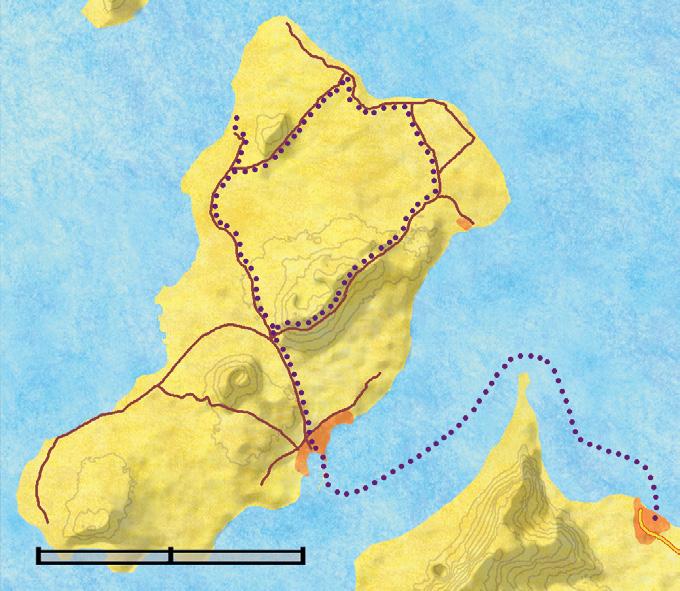
breeds in the cliffs) from late February to late October. Summer and autumn are the best, as you have a chance of seeing Bulwer's Petrel and even Redbilled Tropicbird. Common Dolphin is also sometimes seen.


2 You can rent a bicycle in front of the dock of Caleta de Sebo (the village of La Graciosa) where you arrive. Follow the cycling route given on the map. Note that the track can be quite bumpy in places. Alternatively, you can walk it (beautiful, but very long) or by 4-wheel drive (with a driver but expensive).
Before you start, check the little harbour for waders, and the village for Hoopoes and Great Grey Shrikes. Of course, keep your eyes open all along the route, but especially at the following points.
the Famara cliffs (top). In season (April –October) it is a superb trip to spot sea birds. The most common species here is the Cory's Shearwater (bottom).
3
The main junction lies on the ridge between the two main craters. There are a few allotments here with cactuses, which seem to attract birds. Look out for Hoopoe, Great Grey Shrike, Spectacled Warbler, Stone Curlew and Cattle Egret. We found the Greenish Black-tip here and elsewhere on the island.
4 Continue in the direction Las Conchas. You now pass through a magnificent, empty plain of original semi-desert vegetation. Some Houbara Bustards breed here (or elsewhere in suitable habitat on the island), but chances of seeing them are rather slim.
5
Follow the track to the pristine Las Conchas beach, which is found one third of the way along the circuit. From the beach you have splendid views of the uninhabited islands of Montaña Clara and La Alegranza. On these islands, a large proportion of the rare sea birds of the Canaries breed, but since they only come ashore at night, they are not frequently seen. The dunes here are attractive from a botanical point of view: Traganum, Canary Sea Fennel, Sea Spurge, Alfalfa Dodder, parasitising on Shrubby Launaea, and Warty Sea-lavender are just a few plants you'll find here. Atlantic Lizards (often rather big specimens here) are very common.
Continue the circuit, crossing another ridge between two craters. Beyond it, the landscape becomes sandier.
6
The track reaches the sea again, at another beach. The scatter of small, rounded stones here turns out to be, on closer inspection, the half-fossilized nests of Anthophora bees, a group of hairy bees that still occurs on the islands (see page 35). The strange Traganum bush is very common.
Continue the circuit back to the village.
additional remarks You'll enjoy a visit to La Graciosa even more when you spend a night here, so you'll have an evening and morning to visit the plains in the north. The solitude is splendid then.




See map on page 99 for the location of the following sites.
Keep your eyes open on this 20 minute crossing. Cory´s Shearwater (March to October) can get very close to the boat and any of the local seabirds can be expected. Marine mammals such as Short-finned Pilot Whale, Common and Bottlenose Dolphins have been observed. Flying fish are frequently seen from the ferry.
GPS: 28.855852, -13.872094 The tourist complex of Playa Blanca at the southern end of Lanzarote is a popular base for birdwatchers with a family. It is close to the Janubio saltpans (route 1) and there is some good birding within walking distance. The ornamental vegetation of the village can be good for migrant birds and Spanish Sparrow is common. The old lighthouse of Punta Pechiguera is a suitable site to do some seawatching. Early morning and late evening are the best time of the day. To the north and east there are desert plains with a rich bird life, but they are difficult to visit.


GPS: 28.843499, -13.786643 This famous and beautiful beach is situated in a natural reserve. This is perhaps the best place on Lanzarote to do some snorkelling and discover the astonishing sea life. The entrance fee is 3 euro for a car. There are also taxi-boats from Playa Blanca.

GPS: 28.979725, -13.829295 El Golfo in Timanfaya National Park is a scenic oddity. It is a half-submerged volcano, a semicircular amphitheatre open to the ocean. When the hot lava hit the sea water during a massive eruption, no ash could be formed, and unstable rock appeared. The porous lava and erosion have created bizarre formations with a multitude of red and russet colours. The lake has an intense green colour, caused by green algae, and
Fagonia is a common wildflower that is often found growing in the dark lava pebbles (lapilli).

is linked with the ocean by a subterranean tunnel. El Golfo is signposted in Yaiza.


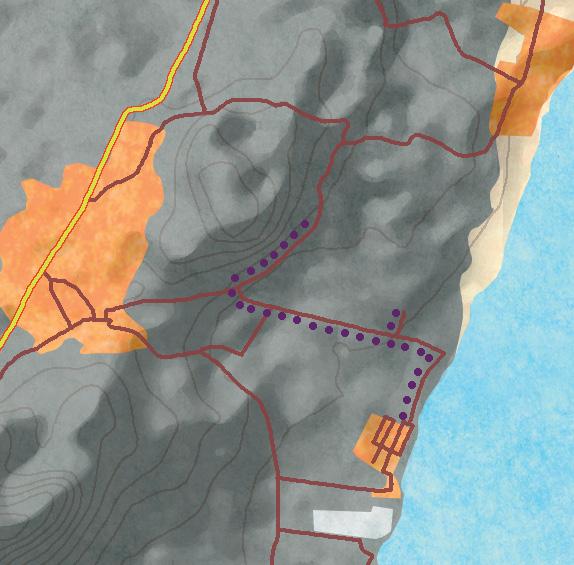

GPS: 29.117825, -13.538960


There are two rough tracks along the west side of the Famara cliffs. The lower one runs close to beach and is popular among surfers (you can drive it). The upper one is longer and less travelled and forms a spectacular backdrop for a long hike. The superb landscape and, as you proceed, the quietude, is wonderful. Botanically, this is an interesting route (with the white-flowered gold-coin Asteriscus schultzii the star species), while the typical Famara cliff birds (Cory's Shearwater, Raven, Barbary Falcon and Osprey) are likely to cross overhead or through the strait. The track starts behind the Urbanización Famara (see map on page 106). At the start, the track splits in an upper and lower section, but they reunite further ahead.
GPS 29.101018, -13.477702 The only freshwater reservoir on Lanzarote has been built near the village called Mala in the northeast. When wet, the spot attracts herons and waders, like Whimbrel and Black-winged Stilt. The track over leads through a hilly arid landscape which is good for Trumpeter Finch, Spectacled Warbler and Raven.
Presa de Mala is reached by turning off the LZ-1 to the village of Mala, and once in Mala, taking the first right, which leads further as a small country road that crosses the LZ-1 and continues as dirt track to the dam, which lies 2 km from the bridge.
g – Barranco teneguime
GPS 29.076069, -13.490748. Another great walking route is the track up the Barranco Teneguime. The landscape is beautiful and it is a good place to find some interesting plants (e.g. Campylanthus), butterflies and other insects (e.g. Greenish Black-tip) and Eastern Canary Gecko. To arrive at the barranco, go to Guatiza. From the centre, take the Calle Álamo that crosses the bridge over the LZ-1. Immediately across it you can turn left on a dirt road to park. On foot, go back to the road and cross it, following the trail through the barranco underneath the slope.



H – salt pans and lava fields of cocoteras

GPS: 29.073017, -13.468823 and 29.061143, -13.460385 At the small saltpans, migrating waders may show up such as Little Stint, Curlew Sandpiper, Dunlin and Black-winged Stilt. The lava fields offer a fine walk and are a main site for the endemic Caralluma which flowers in winter. It grows on undisturbed rocky lava (not on the cultivated fields). Look for a squat square stemmed small cactus. The salt pans are located just south of the tiny village of Cocoteras and east of Guatiza. The lava fields are to the north. We propose the route on the map.
i – Whale-watching from the eastern shore

GPS: 29.019537, -13.465298 If you want to spot whales and dolphins, the eastern shore provides excellent opportunities, but timing and location are key. It's best to visit on calm days with little wind and find a spot at a higher altitude overlooking the ocean. A great option is just north of Teguise, where you can follow a path to a small village called Los Ancones. From there, continue a bit further, either on foot or with caution in a car, and then turn right to reach the hilltop with a view of the ocean. One of our readers shared this location with us and reported sightings of Risso's, Striped,




Bottlenose, and Common Dolphins, as well as Cuvier's Beaked Whale, Fin, Sei, and Bryde's Whale during the winter. It's an exciting variety, especially considering that this site is not widely known. Due to its relative obscurity, it's uncertain what can be seen during other times of the year. However, considering the elevation and the deep waters close to the shore, it's worth exploring this area.
GPS 29.003725, -13.487481 Lanzarote Aquarium has a large collection of fish from Canary Islands waters, such as the triggerfish, golden fishes and fulas. There are six so-called touching-pools where both children and adults can touch and enjoy animals such as sea cucumbers, starfish, sea urchins, coastal-zone fish and small crabs. The aquarium is located in Centro Comercial el Trébol, in Costa Teguise. It opens from 12 to 6 pm. Prices (in 2023) are € 15.- for adults and € 10.- for children. www.aquariumlanzarote.com
Some 71 km out in the Atlantic lie the shallows of the Banco de la Concepción, an outstanding area in marine diversity. Here the ocean is “only” 170 to 200 metres deep and offers an attractive environment for a multitude of whales, dolphins, turtles, sharks, tuna and other fish. Lots of sea birds, including those that breed on the islands of the Chinijo archipelago, come here to feed. The importance of this area for seabirds, particularly rarities, has only recently been appreciated. Regular attractions include Wilson´s, Madeiran and White-faced Stormpetrels, Bulwer's Petrel and Barolo Shearwater plus a mouth-watering selection of rarities like Red-billed Tropicbird, Fea’s/Zino’s and Swinhoe’s Storm-petrels, Black-bellied Storm-petrel and South Polar Skua (one of five potential skuas present!) some of which may yet prove to be annual in small numbers. Up to nine species of cetaceans have also been seen.
Since 2010 two-day pelagic tours to the area have been organized in summer by Lanzarote pelagics whose website (lanzarotepelagics.blogspot.co.uk) is a valuable resource. However, at the time of writing, the company seems dormant, but it’s worth checking for any future trips.



Although Fuerteventura is, like Lanzarote, a dry and fairly low island, it has a quite different character. If Lanzarote is the island of volcanoes, Fuerteventura is the island of deserts. There are fewer lava fields and volcanoes, but there are more desert plains. The sombre slaty-black of Lanzarote is replaced by terracotta soils (all of which are, of course, of volcanic origin).
Fuerteventura is twice the size of Lanzarote, and the second largest of the Canary Islands (only Tenerife is larger). Fuerteventura has fewer inhabitants than Lanzarote, though, and mass tourism is largely confined to coastal sites like Corralejo, Caleta de Fuste, Gran Tarajal, Cotillo, Costa Calma and Morro Jable. Further inland, the villages of La Oliva, Antigua, Tuineje and Betancuria have retained much of their original character.

Fuerteventura has a mixture of rocky hills and extensive plains. The three main ranges are Bentancuria in the west (route 10 and 11), Cuchillos de Vigán in the east (page 149) and the highest range in the south: La Jandía, with its spectacular cliffs (route 12 and 13). Life concentrates in the valleys and barrancos (routes 10, 11), but many of the desert birds are found on the plains (route 8 and 9).
These desert plains run down from the north shore near Corralejo south to La Oliva (route 8) and then through the eastern and western mountain ranges further south to Gran Tarajal. Near Corralejo (site B on page 147) and on the isthmus connecting La Jandía with the rest of Fuerteventura (route 12 and site I on page 150), there are extensive areas of sand dunes, which again support a different wildlife.
Note that on none of the routes, you’ll find much shade. When doing the walks in this book, make sure you have protection against the sun (including sunglasses) and sufficient water with you.

Easy and beautiful walk over a pristine island. Superb snorkelling.
Habitats: open sea, dunes, lagoons, malpaìs, salt marsh s elected species: Barolo Shearwater, Cory’s Shearwayer, Black-winged Stilt, migrating waders, Balsam Spurge, the sea lavenders Limonium bollei and Limonium tuberculatum , Zygophyllum, Parrot Fish





The island of Lobos and its surrounding marine habitats have been a protected reserve since 1982, making it one of the first natural parks of the Canary Islands. The island has a surprising botanical diversity with over 130 species plants, including the endemic Limonium bollei, a beautiful sea lavender. Furthermore, it hosts a great variety of seabirds, including the rare Barolo Shearwater and several species of storm petrel. Finally, its surrounding crystal-clear shallow waters are an important area for sea life, making it an ideal place to go snorkelling. Important notice –make sure you bring food and water with you on the trip.
harbour. There are several companies offering ferries to the Isla de Lobos, and tickets can be arranged online or on the spot. Note that a permit is required to visit the island. You can obtain it yourself via www.lobospass.com or have your ferry company to arrange it for a small price. You have the choice between a regular boat and one
with a glass bottom. The latter is more expensive but adds another experience –views of the sea bottom. On a glassbottom boat you notice how shallow the strait between Fuerteventura and Isla de Lobos actually is! Unfortunately, the sea floor slides away under the boat too fast to recognise any sea life.
1
The boat trip offers an excellent opportunity for close views of seabirds. Cory’s Shearwater is plentiful, and anything else might show up, including, with luck, Barolo Shearwater. Once on Los Lobos, walk down the pier and turn left towards Playa de la Calera. Follow the main path and eventually, turn left at the big sign about the Salinas del Marrajo.
2
T he saltpans of Isla de Lobos have never been used. They were constructed in the 1950’s, around the time refrigerators started to find their way into the kitchen, greatly reducing the need for salt to conserve food. Nevertheless, the salinas offer a good insight into the system of salt extraction in the saltpans (the signs explain this in detail). A bit behind the saltpans, you look out over some coastal ponds that attract migrants. We found a group of spoonbills here.
Return the way you came and continue along the main path.
The spring-flowering sea-lavender Limonium tuberculatum is restricted to Los Lobos and the south of Gran Canaria. Outside the Canaries it is found on the Cape Verde Islands and coastal Morocco.

3
The path alternately runs through malpaís and dunes, where the shrubby sea lavender Limonium tuberculatum is the most striking plant. In the malpaís, Balsam Spurge is particularly common, with some truly impressive and old individuals.
At the next junction, turn left towards the Montaña la Caldera and ascend it. 4
From the caldera, you can enjoy a wonderful view over the island and its position in the strait between Fuerteventura and Lanzarote. The sea-facing side of the mountain is where many of the rare sea birds of the Canary Islands breed, although chances of seeing them here are slim as they typically only come to shore at night.
Find your way back down and continue the trail towards the lighthouse.
5
The faro was built in 1865 and the lighthouse keeper was, for a long time, the only inhabitant of the island. By now, the lighthouse is automatic and there is no need for a permanent lighthouse keeper, meaning that the island is officially uninhabited. The pond near the lighthouse is an excellent place to look for Black-winged Stilts and during migration and in winter, other waders that might show up. Don’t forget to take a look over sea for sea birds. Cory’s shearwater is often present, and who knows what more might show up!
Turn back and turn left towards Las Lagunitas.
6
Las Lagunitas is perhaps the most special part of the island. It has a rich flora that even includes its own endemic sea lavender, Limonium bollei, which is sometimes called the Lobos Houseleek, an ill-chosen name as it is not even remotely related to the houseleeks. Las Lagunitas is another great place to look for migrating waders.
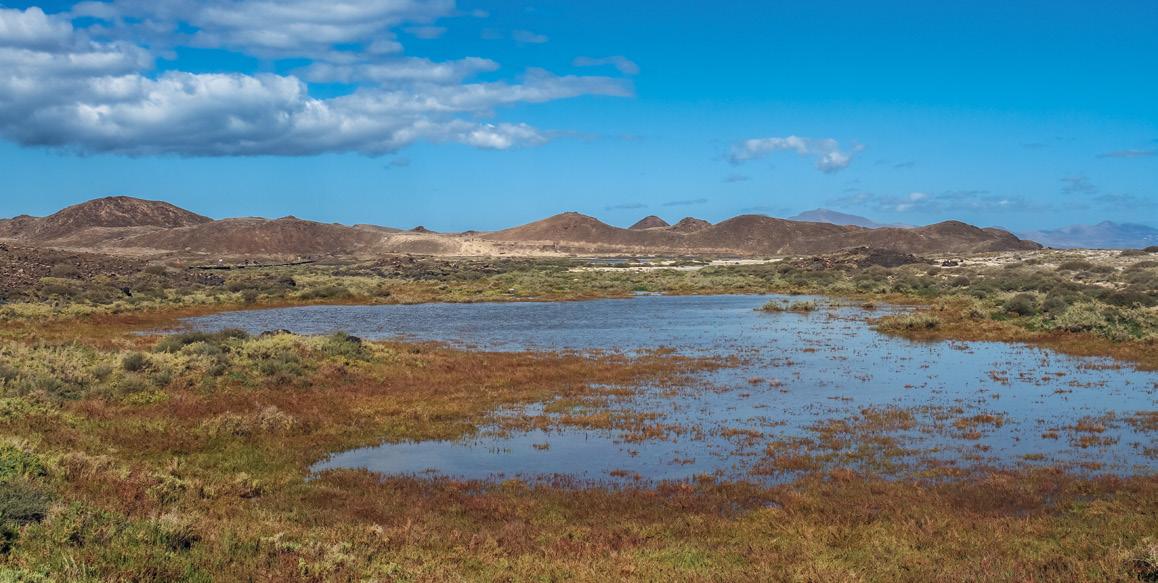
Continue and turn left on the next crossing towards El Puertito.
El Puertito (the little harbour) is near the spot the ferry docks and forms an excellent place to spend the remainder of your time on the island, snorkelling. The sheltered bay with its gradual slopes allows for easy access, while the secluded position limits the size of the waves. A wide diversity of species can be found here. The iconic Parrot Fish can be particularly common here.
7
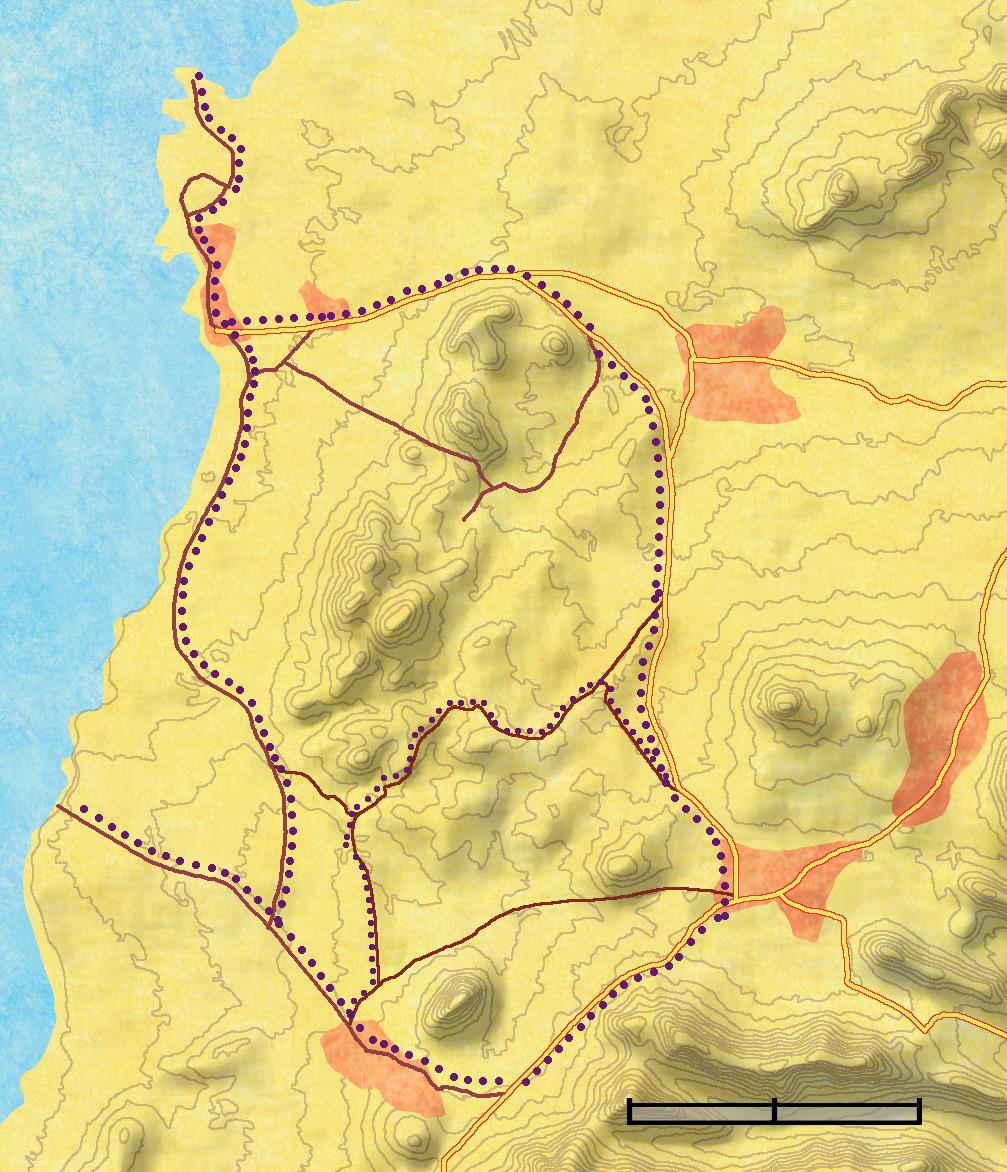

Best place for steppe and desert birds on Fuerteventura. Superb plains with red soils, dark lava and white sands.
Habitats: rocky plains, sandy plains, fields, malpaís, barrancos, rocky coast s elected species: Kleinia, King Juba’s Spurge, Barbary Ground Squirrel, Egyptian Vulture, Buzzard, Houbara Bustard, Cream-coloured Courser, Eastern Canary Gecko



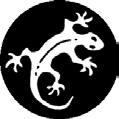
This car route covers a combination of wide and windy stony plains, small fields and an expanse of white sand dunes with the nearby shore and sea. The plains are about the best on Fuerteventura for steppe birds, while the fields and gardens of La Oliva are excellent for birds of agricultural land. Indeed, birds are the great draw of this route, but the stunning open landscape, the variety of habitats and the ample opportunities to step out and explore, make it an attraction for every kind of naturalist. Keep in mind though, that to see the steppe birds, it is best to explore these sites at dawn or towards dusk.
At the time of writing, the tracks were generally good to navigate but a little rough in some places.
starting point Tindaya (on the FV-10). Cross the village and (carefully) follow the potholed road to the coast that starts from the village's west end.
1Drive slowly and stop on high vantage points to scan for steppe birds. Houbara Bustard is frequently seen here, while Creamcoloured Courser, Stone-Curlew and Blackbellied Sandgrouse can be present as well. The most common birds here are Lesser Shorttoed Lark and, of course, Berthelot's Pipit. In the shrubby places, look for Spectacled
The Tindaya plains support some of the highest numbers of Houbara and Creamcolored Courser on Fuerteventura.

2
Warbler, while small flocks of Trumpeter Finch, and, more rarely, Linnet, roam the plains. We urge you to stay on the track in order not to disturb the fragile bird life. It is best to stay in the car and use it as a hide.
Return and follow the (only) track to the left (north; GPS: 28.606301, -14.002336).
The track passes more excellent semi-desert with all the aforementioned birds possible.
The track enters a barranco. Turn left and follow the gully until the track reappears on the other side (GPS: 28.630662, -14.005479). Note that this section may have some tricky spots. If you can't cross, retrace your steps to Tindaya and drive around to pick up the route from Cotillo on the other side. The barranco itself is a pretty place, lined with large Canary Tamarisks.
3
The track leaves the barranco and continues towards El Cotillo. The steppe plain here is again excellent habitat for all steppe birds early in the morning (during the day, the track along the coast becomes busy).
4
Cross Cotillo, a rather unattractive modern settlement, following the direction of the lighthouse (Faro de Tostón).
5
The lighthouse area offers good views over the coastline and the ocean. Seawatching with a telescope may produce high numbers of Cory´s Shearwater, especially in the evenings from March to September. Explore the area around the lighthouse on foot. The many tidal pools on the shore support a good variety of wintering and migrating waders, and usually hold some Little Egrets. Warty Sea-lavender* (Limonium pappillatum) grows close to the road.
6
The dunes just before the lighthouse are worth exploring as well. Sea-heath, Canary Sea Fennel (Astydamia latifolia) and
Narrow-leaved Restharrow* (Ononis angustissima) are common wildflowers, while Barbary Partridge, Hoopoe, Stone Curlew, Trumpeter Finch and even Houbara may turn up.
Return to Cotillo and take the FV-10 to La Oliva. Continue for 10 kms (passing the town of Lagares), the road crosses a lava field. Over the hill, just beyond a white building, turn left onto a section of the old road. Park here (GPS: 28.643023, -13.945490).

7 Explore the malpaís. Verode and King Juba’s Spurge are the common succulent plants, while the rare Burchard’s Caralluma has been found here too (although it is easier to find at another part of the Malpaís described at site B on page 147). Barbary Ground Squirrel, Trumpeter Finch and Barbary Partridge are all present in the lava field, while underneath suitable flat stones, Eastern Canary Gecko can be frequent.
Continue and at the entrance sign of La Oliva, turn a sharp right (GPS: 28.623349, -13.942233).

8 This track leads again through a good area for Houbara Bustard. The best time is in the late afternoon, when small groups gather. Cream-coloured Courser may also be seen.
If you’re feeling adventurous, you can continue this track, driving along a fence and eventually turning left on a T-junction after 7.2 km (GPS: 28.616690, -13.988893) to find your way back to Tindaya. Otherwise, turn around and drive back via the main road.
If you have enough time, it is worth visiting one or more of the other Canary Islands. These are quite different in character, having much higher mountains, and being partially covered in a verdant vegetation of laurel forest. A visit to Tenerife is perhaps the most interesting, since it is here that you will find the highest diversity in habitats and species, including many endemics (see Crossbill Guide Tenerife and La Gomera).
You have two options if you want to visit the other Canary Islands: plane or ferry. Island-hopping by plane: all Canary Islands are interconnected by air by the company Binter Canarias. Most of these flights are daily, or even several times a day. For more information, check www.bintercanarias.com
Taking the ferry : Two companies maintain regular ferry services to other islands: Fred Olson and Naviera Armas. Travelling by boat has the advantage of being less environmentally unfriendly, offering good chances to watch sea birds and dolphins from the boat, and allowing you to bring along your hire car. The downsides are that it is much slower, and that not all islands are connected directly by ferry. A good website to start your search for a ferry connection is www.directferries.co.uk and check the destination guide. You can book your tickets directly at the port, or ask your hotel to arrange it for you. Be at least half an hour early and bring your passport with you.
Lanzarote (Playa Blanca) – Fuerteventura (Corralejo) 6 x day 30 minutes
Lazarote (Arracife) – Gran Canaria (Las Palmas) 5 x week 7.5 hours
Lazarote (Arracife) – Tenerife (Santa Cruz) 5 x week 9 hours
Lazarote (Arracife) – La Palma (Santa Cruz) 1 x week 31 hours
Fuerteventura (Puerto Rosario) – Gran Canaria (Las Palmas) 5 x week 7.5 hours / 3 hours
Fuerteventura (Moro Jable) – Gran Canaria (Las Palmas) 5 x week 3 hours / 1.5 hours
Fuerteventura (Puerto Rosario) – Tenerife (Santa Cruz): 5 x week 11.5 hours
Fuerteventura (Moro Jable) – Tenerife (Santa Cruz): 1 x week 6.5 hours
As each visitor will have a different balance of priorities, it is difficult to give absolute advice as to which island makes the best base. Ideally, try to stay a couple of days on both. If this is not possible, make a day trip to the other islands. Here is a quick comparison guide.
When taking the first boat from Playa Blanco, you can opt for route 8 or 9. Both routes should make it possible for you to see desert birds, including a chance of Trumpeter Finch, Cream-coloured Courser and Black-bellied Sandgrouse, which are hard to find on Lanzarote. Route 9 offers you a good opportunity of seeing the endemic Fuerteventura Stonechat, some waders and wildfowl, including Ruddy Shelduck. The barranco of point 3 of route 8 also offers chances on seeing the chat, plus the Barbary Ground Squirrel.
When taking the first boat from Corralejo, routes 1 and 2 are within easy reach. This offers you the opportunity to visit one of Lanzarote’s highlights: the young lava fields and impressive craters of Timanaya National Park. A short stop at the salt works of Janubio (route 2) is additionally of interest for the waders.
Lanzarote and Fuerteventura are of interest throughout the year, though with some clear seasonal differences.
Breeding birds are mostly sedentary although more active during the breeding period, which is from February to April. The best months for migration are February to March and October to November. By the end of the summer ducks and most waders have left Fuerteventura because reservoirs have dried out. July to October is the better period for sea birds and for breeding Eleonora’s Falcons (see box on page 84).
For wildflowers, winter and spring (December to May) are the best although, even in summer, you’ll find some flowers in bloom. Winter is the ‘rainy season’, which means that there are a couple of short spells of rain between long periods of excellent weather. These brief showers do, however, trigger a modest bloom of wildflowers. Reptiles can be found throughout the year, but are less active in winter. The period between January and May is best for the few dragonflies and butterflies that occur on the islands.
Many, but not all, field guides that cover Europe, also include the Canary Islands. Besides these general guidebooks, we recommend the following books and websites:
Flora It is remarkable that, given the superb flora of the Canary Islands and the large numbers of tourists, there are very few field guides to the flora of the Canary Islands. Bramwell’s Wildflowers of the Canary Islands (ISBN 847207129) is highly recommended but unfortunately out of print. Hence we also recommend, even to English readers, the German Kosmos Kanarenflora (Schönfeld & Schönfelder), which has excellent photographs and information on distribution per island. Die Farn- und Blütenpflanzen der Kanarischen Inseln (Muer, Sauerbier & Cabrera Calixto) is a superb book with good desciptions and colour photograps that covers the entire Canary Island flora. It is big though, with over 1300 pages. Joël Lodé (2010): Succulent Plants of the Canary Islands is an excellent book with all texts in Spanish, English, German and French. Unfortunately it only covers the succulent plants, which forms only a small portion of the entire flora.
Haroun Tabraue, Gil-Rodríguez, Wildpret de la Torre and Prud’Homme van Reine (Author): Marine Plants of the Canary Islands is a guide to the sea weeds and sea grasses of the islands. www.floradecanarias.com. is a great online resource on the Canarian flora.
Birds and bird finding guides Several field guides go into detail on identification and distribution of Canary Islands birds, e.g. Field Guide to the Birds of Macaronesia by Eduardo Garcia del Rey (2011) and Field Guide to the Birds of the Atlantic Islands by Tony Clark, Chris Orgill and Tony Disley (2006). Published in 2013 is the Rare Birds of the Canary Islands by Eduardo Garcia del Rey and Fransisco Javier García Vargas (order at for example www.nhbs.com or www.lynxeds.com).
A number of interesting websites on Canarian birds have been launched by fanatic local birdwatchers, some show many excellent photos and others lots of
information. Consult www.birdinglanzarote.blogspot.com.es and www.avescanarias. blogspot.com.es.
Maps Detailed maps of the islands, which include unpaved tracks, can easily be obtained at the airports and bookshops of Lanzarote and Fuerteventura.
Biology and Evolution If you want to understand more about evolution, island ecology and extinctions on islands (including but not exclusively the Canaries), we can recommend two books which read like a novel: David Quammen The song of the Dodo and Demons in Eden from Jonathan Silvertown. In the Song of the Dodo the author travels all over the world to understand the role of biological isolation and its consequences for nature conservation. Likewise, in Demons in Eden the author travels the globe to understand how it is possible that an evolutionary struggle for the best adaptation leads to a high instead of a low species diversity. In both cases, volcanic islands like the Canaries play a crucial role in understanding these processes.
History The web mdc.ulpgc.es with hundreds of photos shows a digital memory of former times.
Hiking on Fuerteventura and Lanzarote
The monotonous landscape of the deserts and lava fields do not make Lanzarote and Fuerteventura hiking paradises. Nonetheless, there are some beautiful walks set out in the area of La Jandía (e.g. route 13) and some others in the mountains of Betancuria (routes 10 and 11). In Lanzarote, most hikes are in the north and they are truly beautiful (see sites J and K on pages 121-122). The beauty of taking walks, other than just the sake of walking itself, is that you will find wildflowers, insects and reptiles more easily. On foot, you’ll use all your senses – sound, sight, smell, touch, which is the best way to experience the islands. Note that for safe hiking, you should bring plenty of water and protection against the sun (including sun glasses). The sun and heat can be relentless, and on most trails, there is no shade.
Searching for birds in the desert takes time and patience as, especially on Fuerteventura, they are thinly spread. Because they are ground nesters, with little defence against predators, most species rely heavily on their camouflage. Therefore, take your time to scan the landscape carefully; it is usually the motion that gives them away. A telescope comes in handy as chances are that the birds are far away. While driving the tracks, keep your windows rolled down, as it is the songs and
calls that tell you there is something around. Goat pens often attract the seed eating birds because of the seed spill from the hay that is fed to the goats. Even more than in other habitats, birds of deserts are most active at dusk and dawn. At this time, the light is much better too, and there is no heat haze, making it easier to pick out the birds on the ground. Finally, the desert birds are very sensitive, and will press themselves to the ground if someone approaches. Hence it is crucial to stay on tracks and use your car as a hide and drive, very slowly, across the plains.
Lanzarote and Fuerteventura support a large number of sea birds, but they are tricky to see. The best way is by taking a specialised boat trip out to the waters where they frequently feed (see L on page 122). Unfortunately, these trips are very infrequent and relatively costly. Ferry crossings are the next best option. Watching from the coast is the simplest and cheapest option, but birds are likely to be fewer and more distant, making a telescope essential.
There are a couple of good sites for sea birdwatching from land: Tostón (on route 7), La Graciosa (route 6) and Playa Blanca (site B on page 119). The ferries between the islands (see A on page 119) and the ferry to La Graciosa (route 6) are even better. Summer and autumn are the best months (see box on page 84). When going sea watching, consider the following tips:
Timing : The first and last couple of hours of daylight are the best. Both migration (if any) and movement from the nests to the open sea takes place at this time of day. Viewing is also much better as there is no heat haze.
Mild winds are perfect for sea watching. Most seabirds rely on wind to fly, so on completely wind-free days, they tend to stay on the surface. Strong winds are obviously not great as it is hard to keep the telescope steady. However, the hours and days following hard onshore winds can be superb as such winds often push birds closer to land.
Gear : Sea watching without telescope is close to pointless. The more pelagic sea birds (petrels & shearwaters) will be further out over the ocean.
Position : At sea level birds are alternately hidden in wave troughs or visible only as silhouettes against the sky so watch from a vantage point roughly between 10 and 20 metres above sea level. Make sure you have the sun behind you for the best possible light conditions (hence some sites will be ‘morning sites’ and other ones ‘evening sites’).
One of the great ecological treasures of the Canaries lies under water. There is just one problem with the exuberant, colourful submarine world: it is so difficult to explore. Unless you are a skilled scuba diver, you have to make do with a sub-optimal
approach. This can still be enormously rewarding, though. Not including professional scuba diving as an option, there are four ways to get to know the marine world.
Snorkelling in sheltered bays: You can snorkel in many places, especially on the east coasts. Look for sheltered bays with a sandy or gravelly beach (easy to get in) and some rocky areas on the side (this is where most of the fish are). Be aware though, that in some seemingly good bays, the current is too strong to swim. If this is the case, authorities will make this known with signs or red flags. Very good places to snorkel are listed as site C on page 119 for Lanzarote, and site A on page 146 for Fuerteventura. The bays between Tarajalejo and Costa Calma on Fuerteventura are also good.
Visiting the Lanzarote Aquarium : This is where you get eye to gill with some of the more spectacular marine animals of the islands. Downside is that it is in a very touristy setting (see page 120).
Taking a trip on a glass bottom boat : Book a seat on a glass bottom boat to La Graciosa (route 6) or to Isla de Lobos off Fuerteventura (site A on page 146; also easy to visit from Lanzarote). On this trip you see the underwater life literally underneath your feet. On the Isla de Lobos you can go snorkelling and enjoy a walk before returning on the glass bottom boat. Check the kiosks alongside the pedestrian zone of the Marina at Corralejo, or www.fuerteventura.com/lobos/.
Diving in a submarine : Finally, you can take a submarine catamaran, which allows you to explore the underwater world. Submarine Safaris operates from Puerto Calero on Lanzarote (www.submarinesafaris.com; 00 34 928 512898), while Subcat Fuerteventura does so from Morro Jable on Fuerteventura (www.subcat-fuerteventura.com; 0034 900 507 006). Both offer complete dives down to about 30 metres to nearby reefs, where you can see mantas, stingrays, sea turtles and barracudas. In both cases there is a diver accompanying the boat, who presents a show with the local wildlife. Although not cheap (prices € 55.- to € 60,- in 2014) and a rather short trip (little more than an hour), this is the closest you get to actually diving in the area.
The following bird list includes all breeding and wintering birds plus regular passage migrants. Numbers between the brackets (…) refer to the routes from page 100 onwards. F refers to Fuerteventura and L to Lanzarote.
Grebes Little Grebe is rare (F8). In the 1950’s there was a colony at Las Peñitas. Black-necked Grebe is a rare wintering bird in sheltered bays (F, L).
Shearwaters and petrels Cory´s Shearwater is the only sea bird easily seen from the coast and ferry crossings. It is present from March to October (L 6, site A and B on page 119; F7 and 13). (Note that Cory’s has recently been ‘split’ into three near identical species; the nominate form breeds on the islands, the Mediterranean Scopoli’s Shearwater is a migrant/winter visitor and the Cape Verde Shearwater a vagrant). Bulwer’s Petrel, Barolo Shearwater and – rare – White-faced, European and Madeiran Storm Petrels are seen on ferry crossings (Bulwer’s on L6). See also page 84 and 157 for details on sea watching.
Gannets, cormorants and tropicbirds Northern Gannet is rare offshore during winter months. Great Cormorant is seen in increasing numbers. A handful of Red-billed Tropicbirds have been confirmed as breeding on El Hierro, the Chinijo Archipelago and Fuerteventura – they are occasionally seen from vantage points on all sides of both islands, pericularly in the strait between the islands.
Herons, egrets, storks, ibises, spoonbills and flamingos Cattle Egret is farily common near fresh-water and breed (L+F, many on F12). Little Egret and Grey Heron are frequently seen on the coast (e.g. L1 and 6; F8 and 12). Other herons and egrets, storks and Spoonbill are rare but regular vagrants. Small numbers of (feral) Hadada Ibis and Sacred Ibis (both feral) occur on the coast of Jandía, (F12). Greater Flamingos are accidentally found (L1).
Ducks Ruddy Shelduck are now quite common on Fuerteventura (most F8 and site D on page 148). Marbled Teal is fairly rare at Los Molinos (F8). All other ducks are scarce migrants or winter visitors (Most L1 and F8). Almost annually seen are Wigeon, Mallard, Shoveler and Teal, the latter being the commonest winter duck on the islands.
Birds of Prey Buzzard is widespread on Fuerteventura, but rare on Lanzarote (best 4). Egyptian Vulture is locally common on Fuerteventura (best F9, sites F and G on pages 148-149). The situation of the Osprey, Eleonora’s and Barbary Falcon is reversed. They are seen mostly at the Famara cliffs (L4 and 6). Common Kestrel is the most abundant breeding raptor on both islands, present in all open areas. Scarce raptors that are reported regularly on passage or in winter include Marsh, Hen and Montagu’s Harriers, Sparrowhawk, Black Kite, Booted Eagle, Hobby, Merlin and Peregrine. There is no obvious spot where they consistently occur.
Partridges, rails, crakes and coots Barbary Partridge is a breeding resident on both islands (F 7, 9, 11; on Lanzarote only reliably site F on page 120).
Common Quail is an irregular breeder of fields (L4 and F7). Moorhen and Coot are both residents of Fuerteventura (F8 and site D on page 148).
Bustards The Houbara Bustard is a breeding resident on both islands, more widespread on Fuerteventura (F7, 8 and site D on page 148), but with high densities also on the central plains of Lanzarote (L3).
Waders More than 50 species of waders have been recorded on both islands, the vast majority as vagrants. Regular breeding birds are Black-winged Stilt, Kentish Plover, Little Ringed Plover (e.g. L1 and F8). In winter and on migration Turnstone (common) Ringed Plover (frequent), Whimbrel (frequent), Dunlin (rare), Bartailed Godwit (regular), Grey Plover (regular), Redshank (regular) and Greenshank (Regular) occur at the coast (L1 and 6, sites E, H and J on pages 120-121; F7 and 12, sites A, B and E on pages 147-149). Inland wetlands (F8, site I on page 150) and barrancos after rain regularly host wintering Redshank, Greenshank, Common and Green Sandpipers. The sandy coasts (best L1 and F12) often have some Sanderling, Turnstone and Dunlin during the winter.
Breeding residents on the desert plains are Stone Curlew (L3 and 6; F 7, 8, 12 and 13 and site C on page 147) and Cream-coloured Courser (L3 and F 7 and 8; rare at F12 and 13). Both are not uncommon but hard to see.
Skuas, gulls and terns All skua species are present but rare offshore. The Yellowlegged Gull is the only breeding gull and a very common resident. Black-headed Gull and Lesser Black-backed Gull are frequent at the coast in winter in variable numbers. Other gulls are occasional. Sandwich Tern is common during migration periods and winter. Common Tern is a scarce winter visitor and migrant, while Gull-billed Tern is rare during migration periods.
Sandgrouse Black-bellied Sandgrouse is a locally encountered resident in desert habitats on Fuerteventura mostly (best F8). It is the hardest desert bird to find often best located by call as they fly over.
Doves and pigeons Rock Dove is widely distributed on both islands (e.g. L2 and F9). Collared Dove is an abundant resident in built-up areas since it reached the islands in the 1990s. Turtle Dove is one of the few summer visitors e.g. L4). Laughing Dove is a rare resident and breeds on both islands. We found it at Gran Tarajal (F). African Collared Dove is a rare look-alike of Collared Dove. We found it at Haría (L4).
Parakeets Introduced Monk Parakeets maintain a population at Morro Jable (F12). Ring-necked Parakeet breeds in resorts on Lanzarote and is present in various sites on Fuerteventura.
Cuckoos Great Spotted and Common Cuckoo are rare on passage and in winter.
Owls Barn Owl is a rare but widely distributed breeder of cliffs and barns. Long-eared
Owl is scarce and its status as a breeding bird is not clear. Short-eared Owl is a rare winter visitor in open areas.
Swifts Plain and Pallid Swift breed in barrancos and are common from March to October, roughly. Plain Swift is scarce in the winter months. Common Swift is common during migration and winter.
Bee-eaters, Rollers and hoopoes The Hoopoe breeds and is widely distributed in open areas on both islands. Bee-eater and Roller are rare on migration.
Woodpeckers The Wryneck is a rare bird during migration, hiding in trees and shrubs.
Larks Lesser Short-toed Lark (now sometimes called Mediterranean Short-toed Lark) is an abundant resident, breeding in all dry habitats (e.g. L1 and 3 and F 7, 8, 9 and 1). Short-toed Lark is a rare migrant and winter visitor but may be overlooked. Skylark is a rare winter visitor.
Martins and swallows No martins or swallows breed, but Barn Swallow and House Martin are fairly common on passage and rare in winter. Sand Martin and Redrumped Swallow are scarce migrants.
Pipits and wagtails Berthelot’s Pipit is common and widely distributed in open dry habitats. It is probably the most common bird on the islands. Tree Pipit is common on passage during both migration periods. Tawny and Meadow Pipit are scarce on passage and in open fields during winter. Red-throated Pipit is a regular but rare migrant. Recently, Olive-backed Pipit has wintered at Costa Calma (F12). Yellow Wagtail is locally common during migration, especially at irrigated fields and golf resorts (e.g. site D on page 148). Grey Wagtail and White Wagtail are regular but uncommon during migration and in winter.
Thrushes, chats, wheatears, redstarts and allies The Fuerteventura endemic Fuerteventura Stonechat is locally common in gullies and on steep hillsides of the island (e.g. F7, 8, 9, 10, 11 and 13). It is the only species of this group breeding on the islands. Whinchat, Stonechat, Robin and Black Redstart are scarce winter visitors. Nightingale, Bluethroat and Redstart are scarce migrants in resorts. Northern Wheatear is fairly common on migration, while Black-eared Wheatear is a scarce migrant. Song Thrush is a fairly frequent winter visitor.
Warblers Spectacled Warbler and Sardinian Warbler are breeding residents, the first is common in low bushes of dry open areas (L3 and 6, all routes on F) the second is local in lush vegetation and in gardens (L4 and F9, 10, 11 and site F on page 148).
Chiffchaff is a common winter visitor to places with tall vegetation. Note that the Canary Chiffchaff is not found on Lanzarote or Fuerteventura, while the status of Iberian Chiffchaff is obscure due to problems of identification. Blackcap (the European race) Willow and Wood Warbler are present in low numbers in tall vegetation. Subalpine Warbler, Whitethroat and Garden Warbler are common migrants, Western Olivaceous Warbler and Melodious Warbler are rare.
Flycatchers Spotted and Pied Flycatcher are scarce migrants, found in gardens and woods. Costa Calma (F12) and Playa Blanca (site B on page 119) are good sites for them.
Tits African Blue Tit is very local in gardens and vegetated areas (L4, F10 and 11).
Shrikes, orioles, bulbuls Great Grey Shrike (subspecies koenigi) is a widespread and common resident in open dry areas of both islands (especially on F). Golden Oriole is a rare migrant, sometimes seen in gardens. The Red-vented Bulbul, introduced from India seems to have established at some resorts on Fuerteventura (site H on page 150).
Crows, starlings and sparrows Raven is a widespread breeding resident of open areas and is easily seen (e.g. L 2 and 4; F9 and 11). The Common Starling is usually a scarce but in some years a common winter visitor. The only sparrow is Spanish Sparrow, which is common in built up areas and resorts.
Finches The Canary is a rare breeding bird of more vegetated areas (L4). On Fuerteventura, Trumpeter Finch is a common resident on the desert plains (e.g. F7, 8, 9, 13). On Lanzarote it is more localised (L1 and site I on page 121). Linnet is a frequent breeding bird of open areas. Greenfinch and Goldfinch have small populations in resorts and other vegetated areas (best L4). Chaffinch, Serin and Siskin are rare winter visitors.
Buntings Corn Bunting is the only resident bunting on the islands, and it is rare (L4 and F7).
In the references that follow, the numbers refer to the pages and the letters to the position on the page (t=top, c=centre, b=bottom, with l and r indication left and right).
Aragon Birding / Boyer, David: 31, 108
Aragon Natuurreizen / Woutersen, Kees: 4 (t), 22 (t), 34, 39 (r), 45, 49 (t+b), 60, 61, 68, 72, 101 (b), 107 (t), 115 (b), 128, 131 (t), 133, 149 (b)
Dall’Orto, Giovanni: 75
Crossbill Guides / Hilbers, Dirk: cover, 4 (b), 5 (2nd to 4th from top), 10, 14 (t+b), 19 (r), 20, 24, 25, 26 (t), 27, 30, 33 (t+b), 35, 38, 39 (t+l), 41 (t), 43 (t+b), 47, 50 (t+b), 51 (t), 55, 58 (t+b), 59, 64 (l+r), 66, 67, 69 (t+c), 71, 88, 89 (b), 91, 92 (t+b), 98, 101 (t), 103 (t+b), 104, 105, 110, 111 (b), 112 (t+b), 114, 115 (t), 118, 120, 126 (l+r), 131, 133 (t+b), 134 (lb+rb), 137 (t), 141, 145 (b), 148, 149 (b), 150, (t+b), 151 (t+b)
Crossbill Guides / Swinkels, Constant: 26 (b), 32, 69 (b), 73, 78, 94 (r), 117 (t), 211 (t+b), 125, 126, 134 (b), 136, 140 (t), 145 (t), 146, 152
Grunsven, Roy van: 4 (3rd from top), 36
Janssens, Roelof: 22 (b), 111 (t), 142 (b), 143, 147
Messemaker, Ronald: cover, 4 (2nd from top), 40, 54, 76, 80, 82, 137 (b)
Nijhuis, Nicole van: 5 (top), 84, 122
Raevens, Frederic: image author
Rittner, Oz: 97 (t+b)
Saxifraga / Kruit, Rik: 74 (b)
Saxifraga / Munsterman, Piet: 85 (t+b)
Saxifraga / Skornik, Iztok: 131 (b)
Saxifraga / Vastenhouw, Bart: 117 (b)
SEO-BirdLife / Martin, Aurelio: 46, 81 (l)
Tejera, Gustavo Peña: 74 (t), 81 (r), 89 (t), 107 (b), 148 (t)
Veling, Kars: 93
Versluys, Remco: 19 (l), 41 (b), 51 (b), 62, 90, 96 (t+b), 108 (b), 138, 14o (b)
Verstrael, Theo: 94 (bl)
All illustrations by Crossbill Guides / Horst Wolter
It is not always easy to compress research, gathering on site information, personal observations and taking photographs in the short period of a field trip. No matter how often you go or long you stay, there are always things you’ve missed. Hence we are very grateful to everyone who has provided us with photographs, helped us with additional information or verified the drafts we produced. Our special gratitude goes out to Jaap Bouwman, David Boyer of Aragon Birding, Roelof Janssens, Jan-Herman Lamers, Ronald Messemaker, Nicol Nijhuis, Oz Rittner, Jan van der Straaten of Saxifraga Foundation, Gustavo Peña Tejera, Kars Veling and Remco Versluys.
We furthermore thank the team of Crossbill Guides Foundation – not just those who worked on this guidebook and are mentioned in the colophon, but most in particular all those who work behind the scenes to run the organisation or who support the foundation’s work financially: Sarah Bakker, Elsbeth Gerritsen, Barbara Kwast, Theo Verstrael, Dennis Wansink, Johanna Winkelman, Louis Wolf and Mart Wolter.
Finally we thank all of Crossbill Guides’ partners for their collaboration: Paul Kemmeren, Jack Folkers, Kathrin Ohrmann and all others at KNNV Publishing; Pauline Gosden, Sarah Squibb and Julie McCarron of Vine House, Jan van der Straaten, Marijke Verhagen and all photograpers of Saxifraga Foundation and the people of Swarovski Optik – the latter not only for being a partner of Crossbill Guides but also for their support of the Life project to preserve Houbara Bustards. After all, it is not just about enjoying nature and wildlife – we need to conserve it as well.
Dirk Hilbers and Kees Woutersen Crossbill Guides FoundationLanzarote and Fuerteventura, the two easternmost Canary Islands, are very different from the rest of the archipelago. With their odd cross of volcanic and Saharan-style landscapes, they form a special destination – one where you can find birds and other animals that occur nowhere else in Europe or even the world. Unexpected perhaps for these dry islands, there is beautiful flora to explore, while the ocean itself is inviting for snorkelling or watching dolphins and seabirds. With this guidebook you’ll discover that Lanzarote and Fuerteventura have much more to offer than just sun and beaches.
Fuerteventura


The guide that covers the wildflowers, birds and all other wildlife
Routes, where-to-watch-birds information and other observation tips
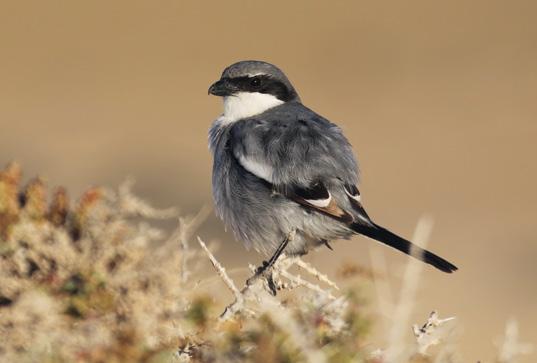
Insightful information on landscape and ecology
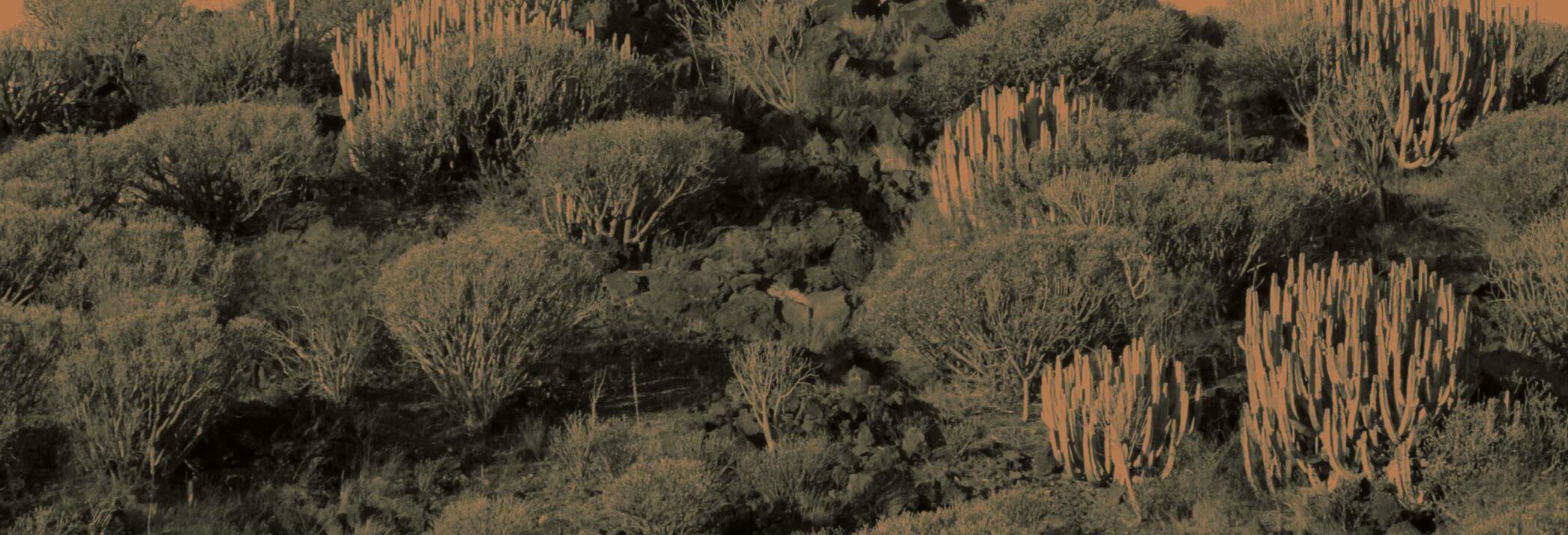
www . crossbillguides . org - if you want to see more

ISBN 978-94-91648-26-7
9 789491 648267